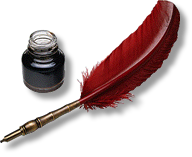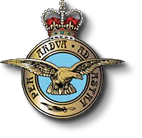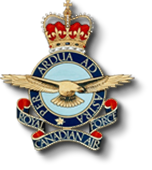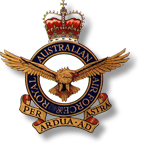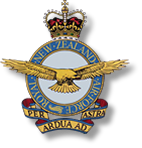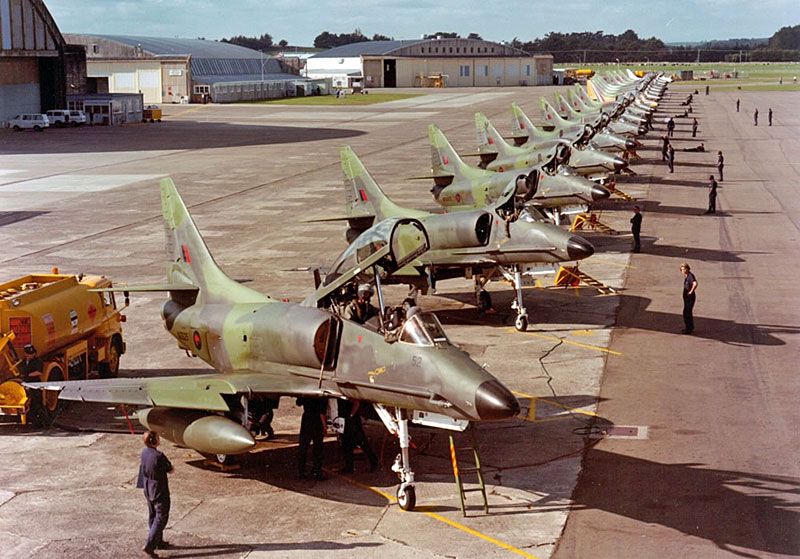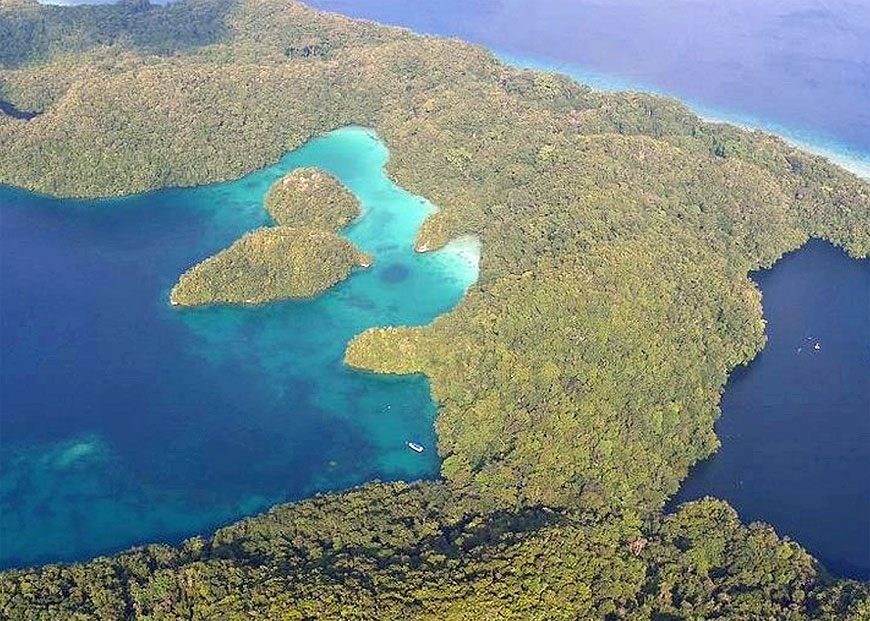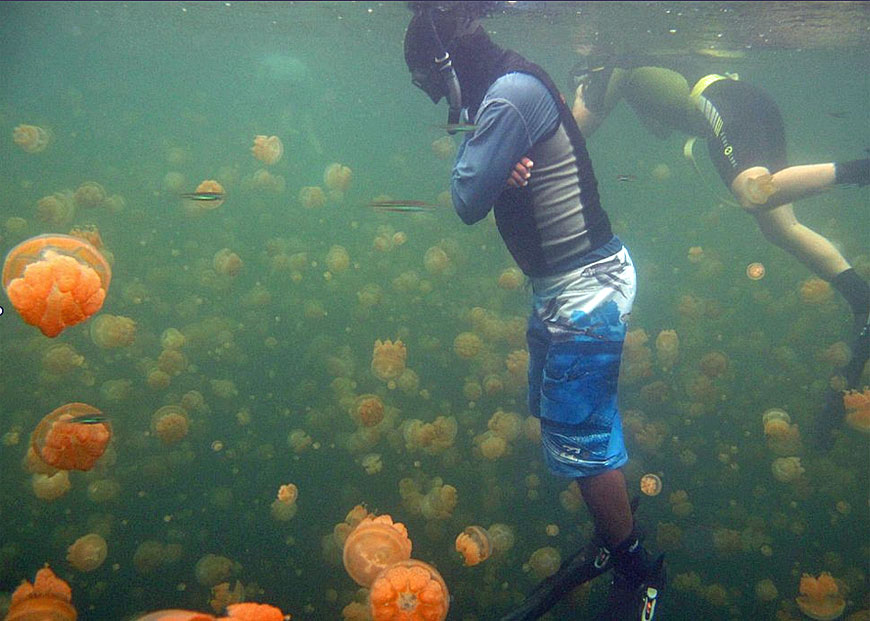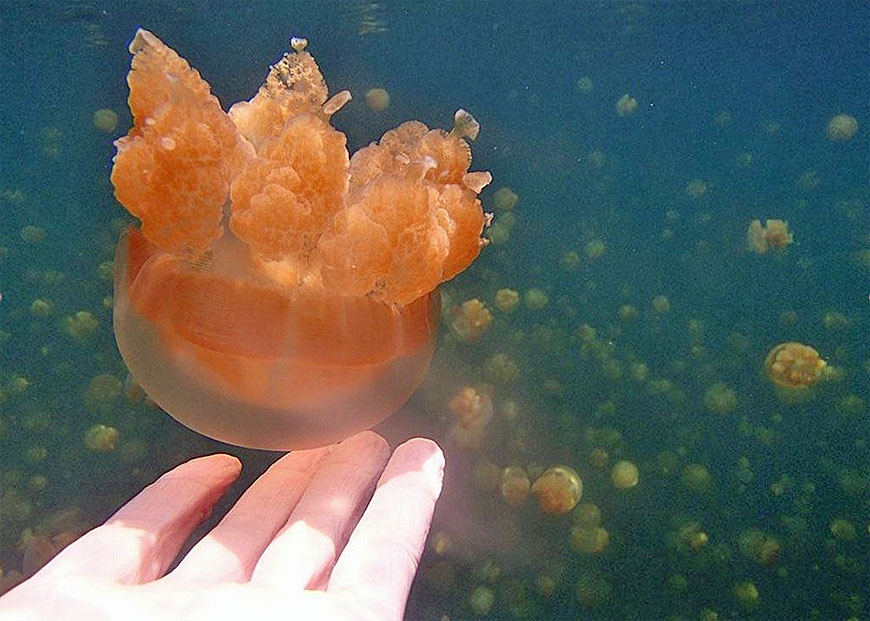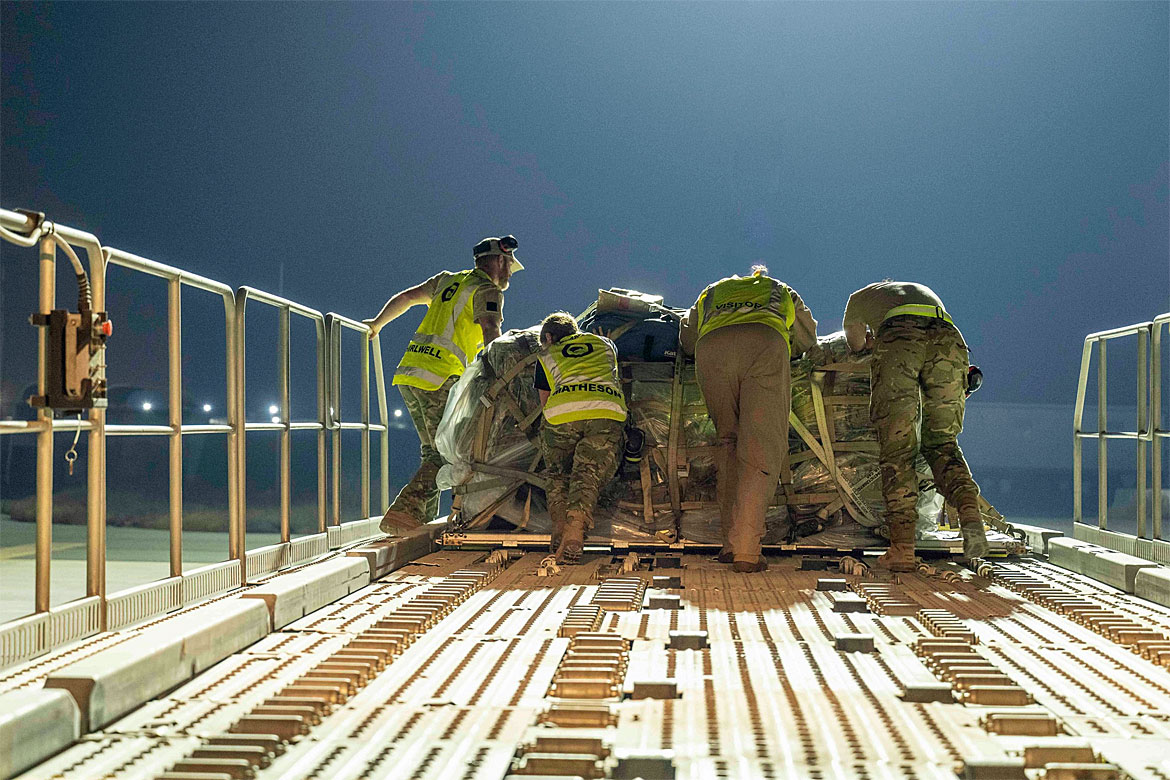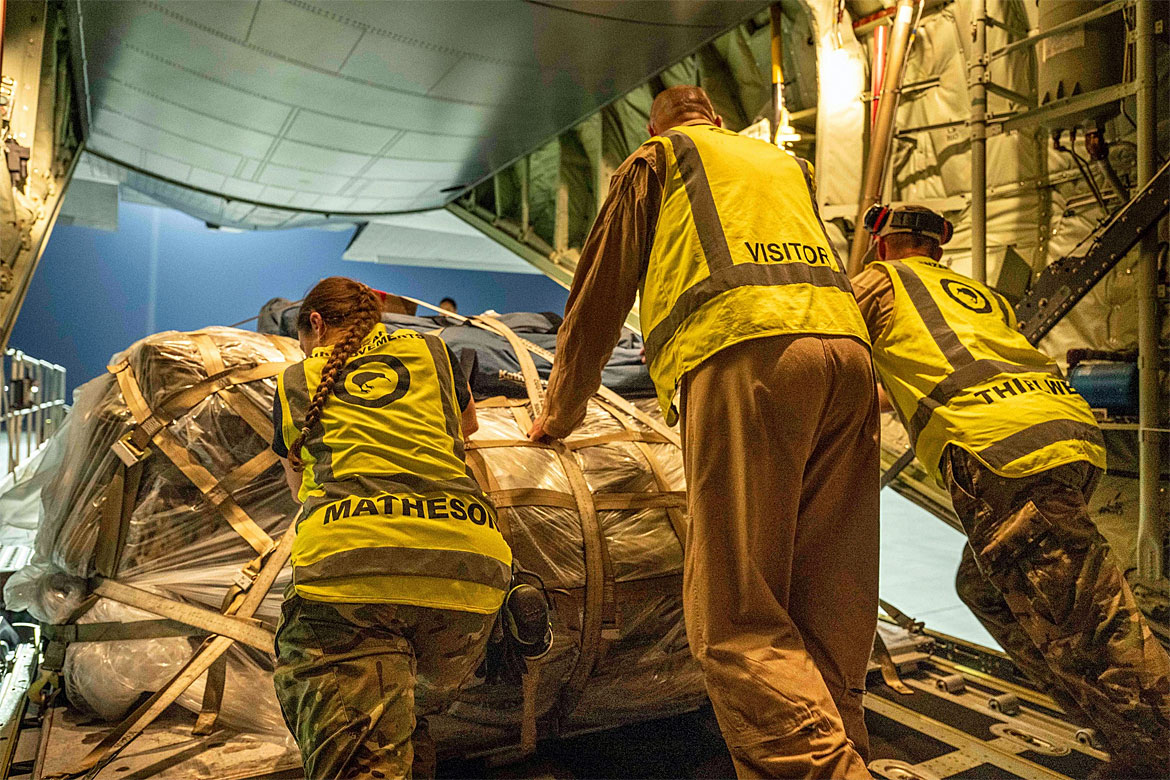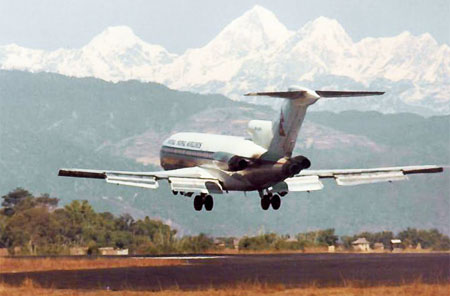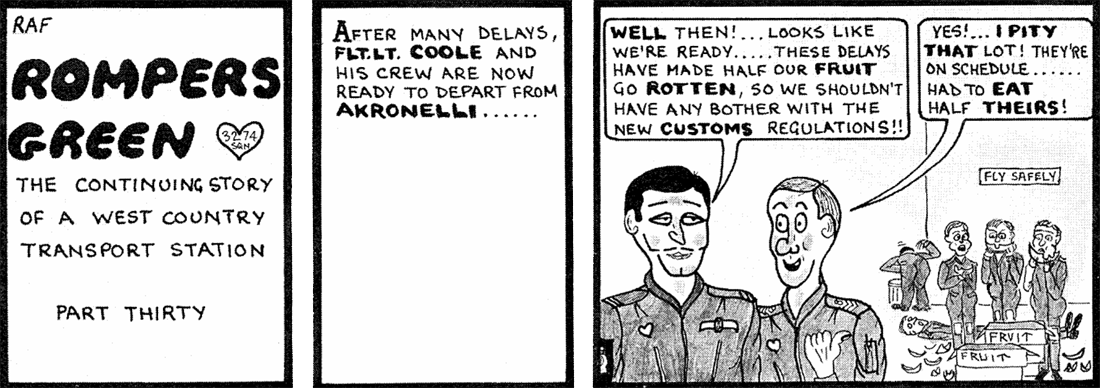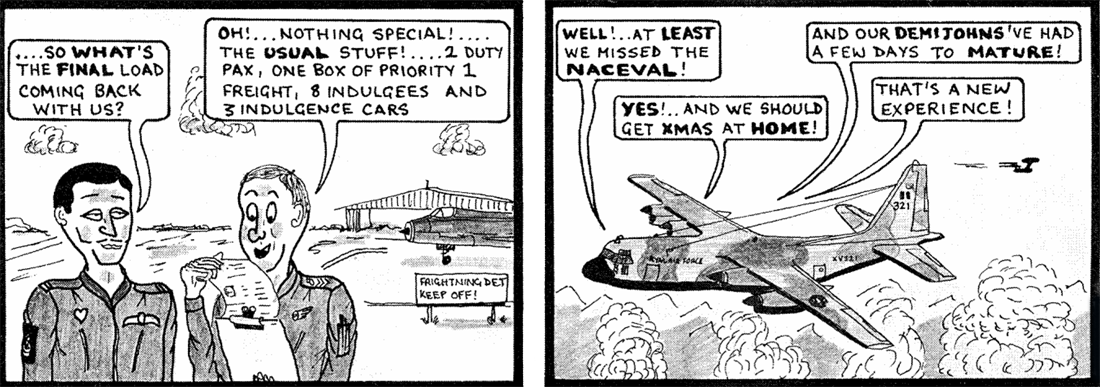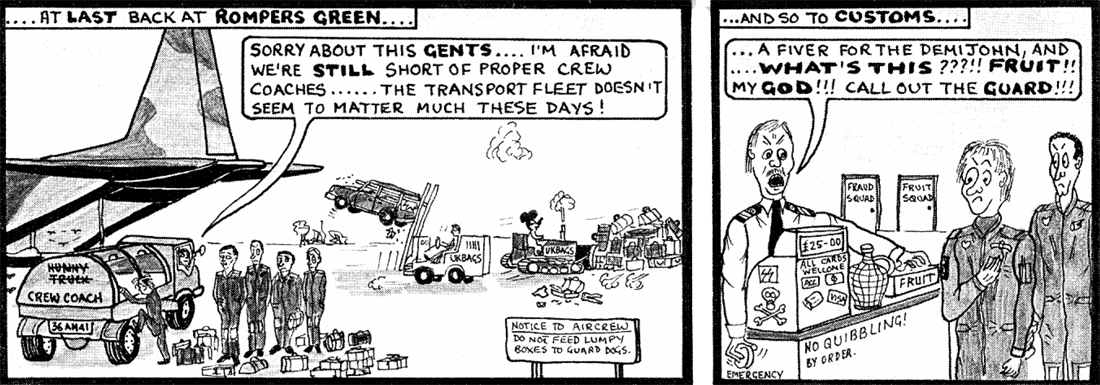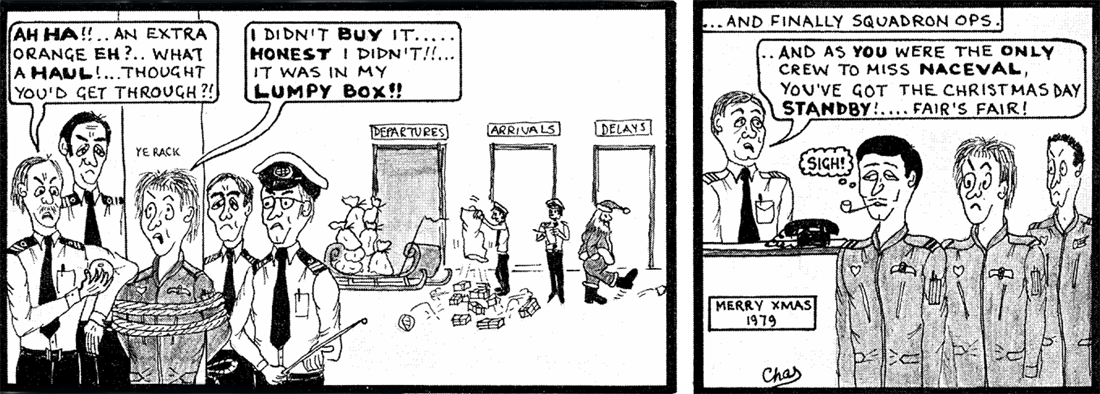

Security review launched after activists break into RAF base

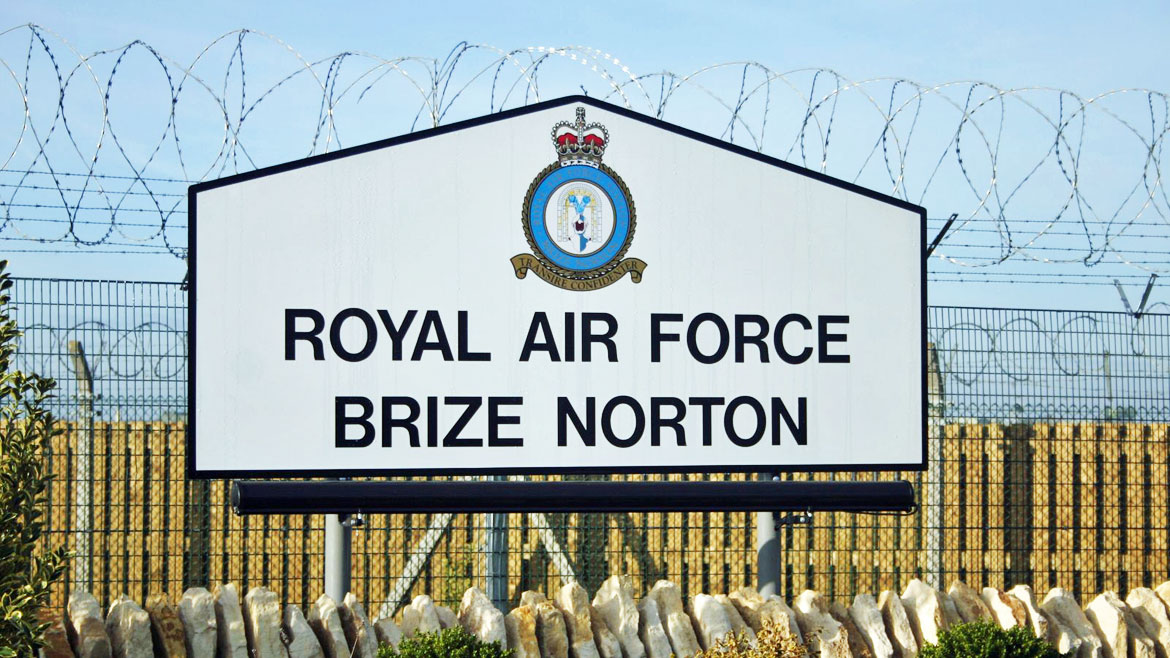
A security review has been launched across UK military bases after pro-Palestinian activists broke into RAF Brize Norton and sprayed two military planes with red paint. Prime Minister Sir Keir Starmer condemned the action as "disgraceful", saying it was an "act of vandalism".
Footage posted online by Palestine Action on Friday showed two people inside the Oxfordshire airbase in darkness, with one riding on a scooter up to an Airbus Voyager and spraying paint into its jet engine. South East counter terrorism police later confirmed its specialist officers were investigating the incident alongside Thames Valley Police and the Ministry of Defence (MoD).
Downing Street said the incident had not blocked any planned aircraft movements or stopped any operations.
Palestine Action said the activists evaded security and claimed they had put the air-to-air refuelling tankers "out of service". RAF engineers are assessing the damage and a defence source told the BBC they did not expect the incident to affect operations.
Text: BBC Video: ITV
Footage posted online by Palestine Action on Friday showed two people inside the Oxfordshire airbase in darkness, with one riding on a scooter up to an Airbus Voyager and spraying paint into its jet engine. South East counter terrorism police later confirmed its specialist officers were investigating the incident alongside Thames Valley Police and the Ministry of Defence (MoD).
Downing Street said the incident had not blocked any planned aircraft movements or stopped any operations.
Palestine Action said the activists evaded security and claimed they had put the air-to-air refuelling tankers "out of service". RAF engineers are assessing the damage and a defence source told the BBC they did not expect the incident to affect operations.
Text: BBC Video: ITV

From: Don Lloyd, Calgary, AB
Subject: Working in the Cold
Good Evening Tony,
My introduction to working in the cold started shortly after my first posting to 1 AMU Namao. Working shift on line crew from Aug '63 to Dec '64 meant we were loading and unloading the C-119 Boxcar and Hercs, a lot of the time outside on the "north 40". It was damn cold sometimes with little or no protection from the wind.
After that experience, I started flying as a Loadmaster, and as we all know we had weekly runs all year round to the "exoctic" (really cold) spots in the Arctic. Places like Resolute Bay, Yellowknife, Whitehorse and Inuvik to mention but a few. The worst one I can recall was in Inuvik in February, when the air temperature was hovering around -30ºC and the wind was blowing at 28 mph. To make it really unpleasant, all they had was a forklift to use to unload and reload the pallets sitting on the ground and I was the driver. Anybody that flew north of 60 in the "winter" has a tale of their own to tell for sure.
Subject: Working in the Cold
Good Evening Tony,
My introduction to working in the cold started shortly after my first posting to 1 AMU Namao. Working shift on line crew from Aug '63 to Dec '64 meant we were loading and unloading the C-119 Boxcar and Hercs, a lot of the time outside on the "north 40". It was damn cold sometimes with little or no protection from the wind.
After that experience, I started flying as a Loadmaster, and as we all know we had weekly runs all year round to the "exoctic" (really cold) spots in the Arctic. Places like Resolute Bay, Yellowknife, Whitehorse and Inuvik to mention but a few. The worst one I can recall was in Inuvik in February, when the air temperature was hovering around -30ºC and the wind was blowing at 28 mph. To make it really unpleasant, all they had was a forklift to use to unload and reload the pallets sitting on the ground and I was the driver. Anybody that flew north of 60 in the "winter" has a tale of their own to tell for sure.
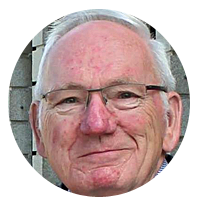
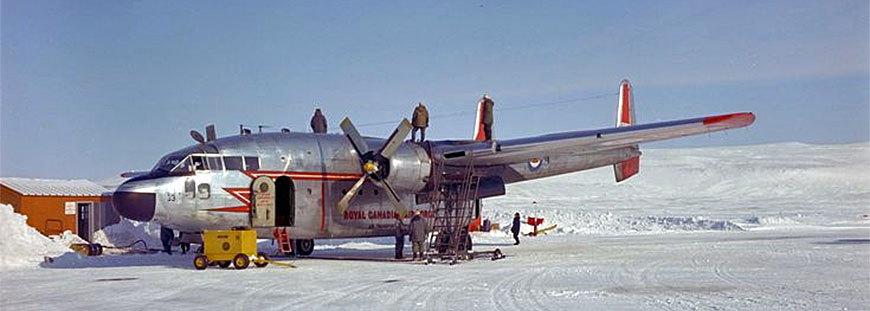
Fairchild C-119 Flying Boxcar on Northern Ops
"Per Ardua Ad Astra"
Cheers... Don
Cheers... Don

From: Joy Brown, Preston, Lancs
Subject: Most memorable places
Hello Tony,
As I wasn’t in the RAF, my most memorable place has to be RAF Ballykelly in Northern Ireland, as that was where I met my husband, Jim. The second memorable place was Singapore.
Will look forward to the replies.
Joy x
(w/o Jim)
Subject: Most memorable places
Hello Tony,
As I wasn’t in the RAF, my most memorable place has to be RAF Ballykelly in Northern Ireland, as that was where I met my husband, Jim. The second memorable place was Singapore.
Will look forward to the replies.
Joy x
(w/o Jim)


Troops and Aircraft Deployed to Middle East
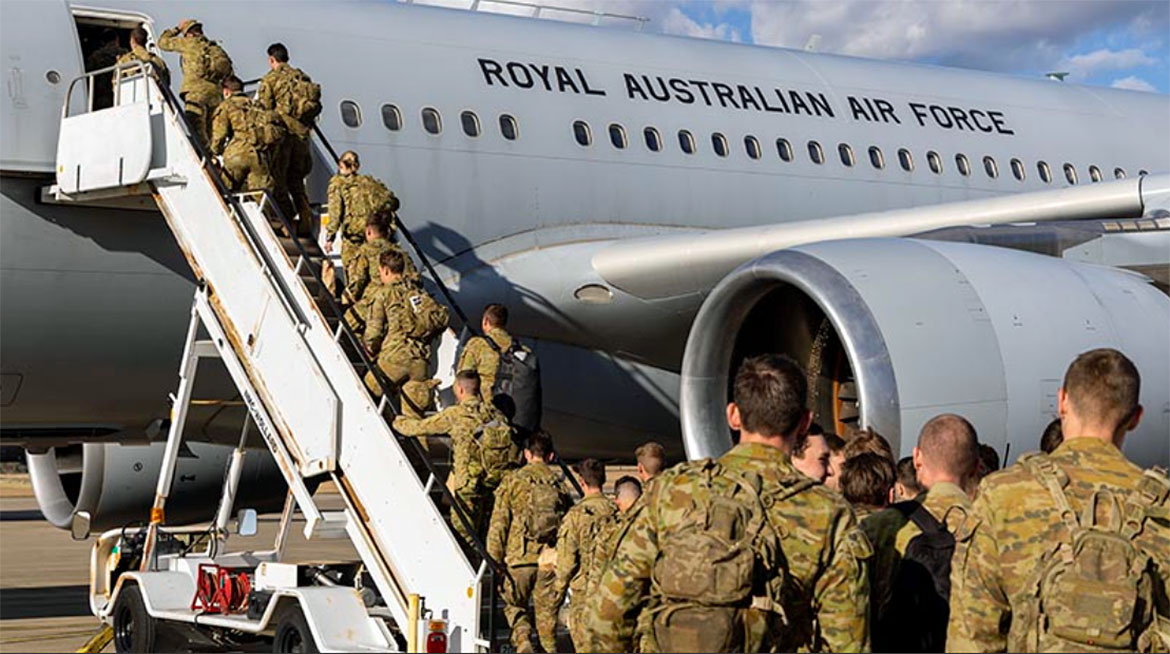
Australian Army Soldiers board a Royal Australian Air Force aircraft in support of Operation Beech, at RAAF Base Amberley, Queensland.
To support Australians seeking to leave the Middle East, Australian Defence Force personnel and aircraft have been deployed to the region. Operation Beech is a non-combat deployment, intended as a precautionary measure as part of whole-of-Australian-government support to Australian citizens and approved foreign nationals in the region.
The ADF contingent includes two strategic airlift assets configured for passenger transport and an ADF personnel contingent from both the Australian Army and Royal Australian Air Force which will provide the Australian government with additional capabilities to assist Australian citizens and approved foreign nationals if required.
Operation Beech is Defence’s support to the Australian-government consular response to the latest Middle East conflict.
The Department of Foreign Affairs and Trade is the lead agency for Australian consular assistance and will continue to provide updates to registered Australians.
Australians in the region who are seeking Australian-government support should register via DFAT’s Crisis Portal or by calling the 24-hour Consular Emergency Centre on +61 2 6261 3305 (from overseas) or 1300 555 135 (from within Australia).
contactairlandandsea.com
The ADF contingent includes two strategic airlift assets configured for passenger transport and an ADF personnel contingent from both the Australian Army and Royal Australian Air Force which will provide the Australian government with additional capabilities to assist Australian citizens and approved foreign nationals if required.
Operation Beech is Defence’s support to the Australian-government consular response to the latest Middle East conflict.
The Department of Foreign Affairs and Trade is the lead agency for Australian consular assistance and will continue to provide updates to registered Australians.
Australians in the region who are seeking Australian-government support should register via DFAT’s Crisis Portal or by calling the 24-hour Consular Emergency Centre on +61 2 6261 3305 (from overseas) or 1300 555 135 (from within Australia).
contactairlandandsea.com

From: Wayne Flaherty, Winnipeg, MB
Subject: The Most Memorable Flights
Hi Tony,
The most awesome flight I had was bringing Charles and Diana on their first visit to Canada in 1983. We picked them up at Heathrow and flew direct to Charlottetown where they stayed for a few days onboard the Royal yacht Britannia. Then to Edmonton for the opening of the summer games. All in all, a three-week trip with their Royal Highnesses.
Wayne
Subject: The Most Memorable Flights
Hi Tony,
The most awesome flight I had was bringing Charles and Diana on their first visit to Canada in 1983. We picked them up at Heathrow and flew direct to Charlottetown where they stayed for a few days onboard the Royal yacht Britannia. Then to Edmonton for the opening of the summer games. All in all, a three-week trip with their Royal Highnesses.
Wayne
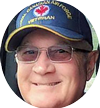

From: Richard Gunn, York
Subject: The Most Unique or Memorable Place
Hi Tony
A few memories of Dubai 1961/1962 daily commute from RAF Sharjah to collect goods ex-liners landed by barge as the entrance to the creek was very shallow.
Subject: The Most Unique or Memorable Place
Hi Tony
A few memories of Dubai 1961/1962 daily commute from RAF Sharjah to collect goods ex-liners landed by barge as the entrance to the creek was very shallow.
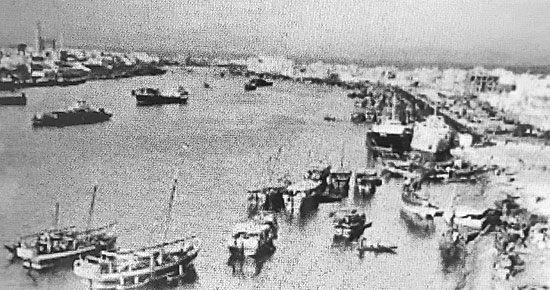
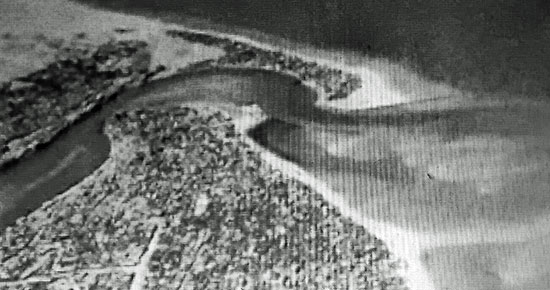

Airbus A400M Atlas at the Paris Air Show

From: Mark Attrill, Tartu
Subject: The Most Unique or Memorable Place
Hi Tony,
On the topic of Unique or Memorable places, there have been many but I will try to keep this short and offer up two.
1). Royal New Zealand Air Force Ohakea, in the late 1980s. This was the RNZAF's principal fighter base and not a Hardened Aircraft Shelter in sight! It was like stepping back in time. A rudimentary fence line, no sangers, bright yellow Ground Support Equipment, Land Rovers etc and Fire Engine Red rescue vehicles. Not a drop of IRR Green anywhere. All the jets were lined up in neat rows on the flightline. I was there for two days/nights on an exercise recce, scoping it out as a possible airhead. Lunch in the Officers' Mess was a leisurely affair and afternoon tea was served from 4.00pm.
There were two RAF pilots on exchange tours and they both mentioned that the base routine was how they imagined it would be on an RAF station in the UK during the 1950/60s, minus the QRA or nuclear alert bases like Binbrook, Leuchars or Waddington etc.
Subject: The Most Unique or Memorable Place
Hi Tony,
On the topic of Unique or Memorable places, there have been many but I will try to keep this short and offer up two.
1). Royal New Zealand Air Force Ohakea, in the late 1980s. This was the RNZAF's principal fighter base and not a Hardened Aircraft Shelter in sight! It was like stepping back in time. A rudimentary fence line, no sangers, bright yellow Ground Support Equipment, Land Rovers etc and Fire Engine Red rescue vehicles. Not a drop of IRR Green anywhere. All the jets were lined up in neat rows on the flightline. I was there for two days/nights on an exercise recce, scoping it out as a possible airhead. Lunch in the Officers' Mess was a leisurely affair and afternoon tea was served from 4.00pm.
There were two RAF pilots on exchange tours and they both mentioned that the base routine was how they imagined it would be on an RAF station in the UK during the 1950/60s, minus the QRA or nuclear alert bases like Binbrook, Leuchars or Waddington etc.
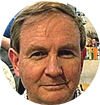
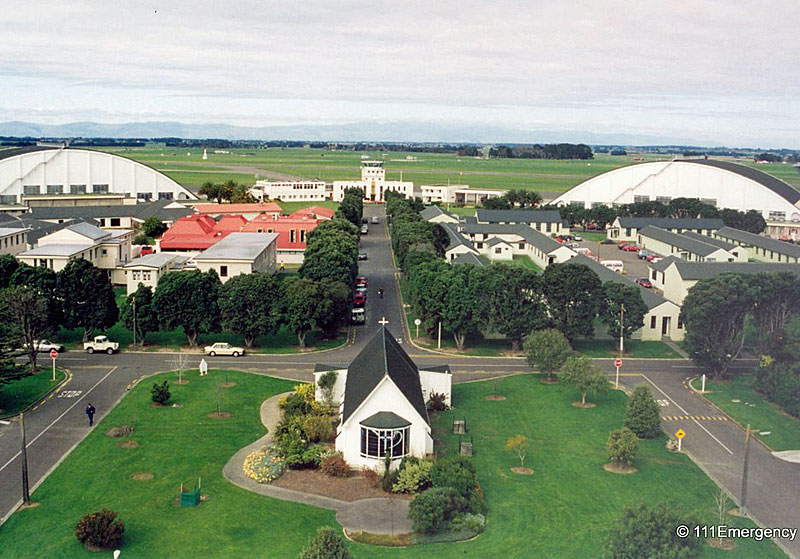
I attach two photos of RNZAF Ohakea (neither of them mine though).
2). Downtown Nagasaki in the tsuyu (monsoon) season. I had lived in the Far East (Singapore) as a 'scaley brat' for 6 years and had been based in Hong Kong but walking through the downtown district of Nagasaki with the rain pouring down, steam coming off the street and the cacophony of sounds all around, it was like a scene out of the sci-fi film 'Bladerunner'. The locals were reasonably friendly towards 'gweilos' unlike those in Hiroshima, who clearly long remembered the horrors of the atomic blast and massive loss of life. While Nagasaki was also hit, the local topography, to a certain extent, prevented a similar effect to that witnessed in Hiroshima - something I learnt about while I was there.
Cheers for now,
Mark
Cheers for now,
Mark

From: David Forsyth, St Hilaire de Riez
Subject: Operation Sedburgh
Hello all,
When Tony asked if I would like to join the OBA, despite relatively little Movements' experience, of which more later, I was delighted to accept.
Persusing the information on the Old Bods' site, I spotted in the F540 Section for April, 1972: "Operation Sedburgh, Withdrawal from Majunga" team led by Gerry Keyworth. That brought memories flooding back of long hours in Majunga spent on preparation of the Movements Annexes of the Operation Order. As Tony is always on the lookout for articles for his outstanding newsletters, I thought the following might be of some interest. I shall drop a few names as part of the pleasure of reading Tony's newsletters is to come across names from yesteryear.
But first a little context.
When Ian Smith made his Unilateral Declaration of Independence (UDI) in 1966, Harold Wilson’s government persuaded the UN to impose sanctions against Rhodesia, now Zimbabwe. The nearest sea port to which Rhodesia had access for imports, particularly oil products, was Lourenzo Marques in Mozambique. Madagascar accepted that surveillance patrols of the Beira Straits, between Madagascar and Mozambique could be mounted from the town of Majunga (now Mahajanga) in North West Madagascar.
This was achieved by positioning a couple of Shackleton Maritime Reconnaissance aircraft at the local airport.
Subject: Operation Sedburgh
Hello all,
When Tony asked if I would like to join the OBA, despite relatively little Movements' experience, of which more later, I was delighted to accept.
Persusing the information on the Old Bods' site, I spotted in the F540 Section for April, 1972: "Operation Sedburgh, Withdrawal from Majunga" team led by Gerry Keyworth. That brought memories flooding back of long hours in Majunga spent on preparation of the Movements Annexes of the Operation Order. As Tony is always on the lookout for articles for his outstanding newsletters, I thought the following might be of some interest. I shall drop a few names as part of the pleasure of reading Tony's newsletters is to come across names from yesteryear.
But first a little context.
When Ian Smith made his Unilateral Declaration of Independence (UDI) in 1966, Harold Wilson’s government persuaded the UN to impose sanctions against Rhodesia, now Zimbabwe. The nearest sea port to which Rhodesia had access for imports, particularly oil products, was Lourenzo Marques in Mozambique. Madagascar accepted that surveillance patrols of the Beira Straits, between Madagascar and Mozambique could be mounted from the town of Majunga (now Mahajanga) in North West Madagascar.
This was achieved by positioning a couple of Shackleton Maritime Reconnaissance aircraft at the local airport.

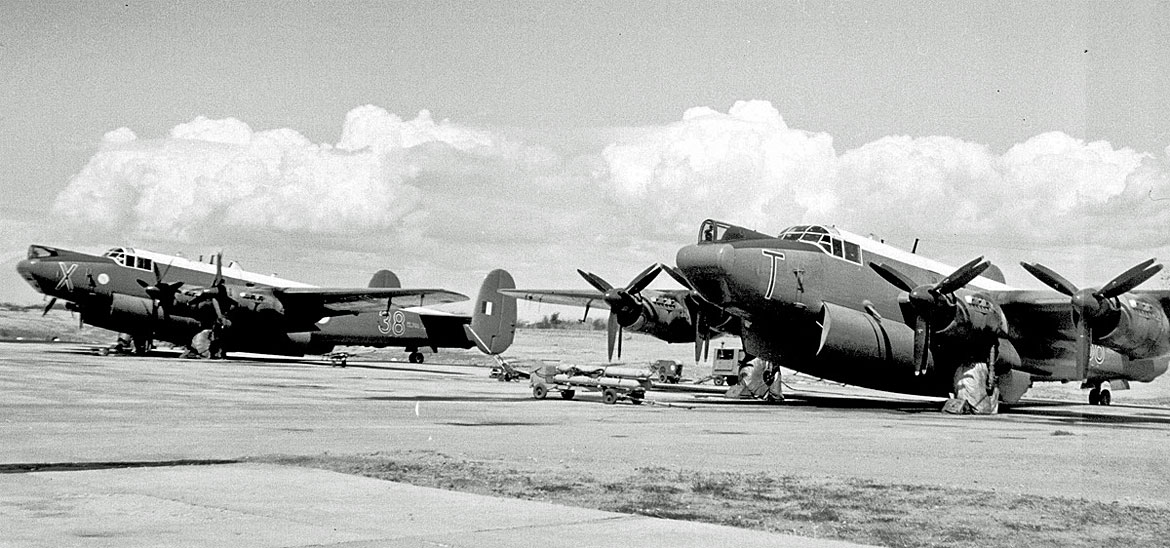
The Royal Air Force Detachment Majunga existed from 1966 until 1972. Aircraft were provided initially from Squadrons based in the Far East or the Middle East, more latterly from the UK.
After the first few years, Aircrew and Ground crew did 2 month stints whilst a small number of cadre officers and airmen did 6 month stints and the Wing Commander CO did 12 months, accompanied. Views as to the relative success of these sanctions efforts are mixed – but the episode did provide a unique opportunity for a relatively small number of RAF personnel to experience life in a French/ Malgache culture and a stay overseas without the usual trappings of military infrastructure.
I arrived in January 1971 to take up the post of Detachment Supply and Movements Officer from Tom Mitcham for supposedly 6 months, which turned into 7 months when I handed over to Geoff Britton – neither he nor I imagining then that he was to be the last.
After the first few years, Aircrew and Ground crew did 2 month stints whilst a small number of cadre officers and airmen did 6 month stints and the Wing Commander CO did 12 months, accompanied. Views as to the relative success of these sanctions efforts are mixed – but the episode did provide a unique opportunity for a relatively small number of RAF personnel to experience life in a French/ Malgache culture and a stay overseas without the usual trappings of military infrastructure.
I arrived in January 1971 to take up the post of Detachment Supply and Movements Officer from Tom Mitcham for supposedly 6 months, which turned into 7 months when I handed over to Geoff Britton – neither he nor I imagining then that he was to be the last.
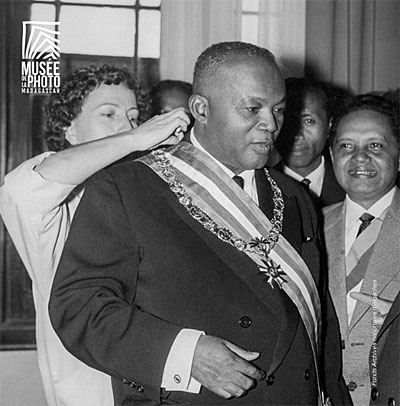
In the Spring of 1972, the President, Philippe Tsiranana, who had been well-disposed to France, former colonial power and still heavily involved in Madagascar, was very ill and began to lose political control.
Many French nationals were instructed to leave pretty much overnight and the Detachment was suddenly brought to an end and Operation Sedburgh was dusted off and activated.
Many French nationals were instructed to leave pretty much overnight and the Detachment was suddenly brought to an end and Operation Sedburgh was dusted off and activated.
I mentioned earlier that I had little Movements experience. Qualified at Cranwell, like David Powell who writes often and interestingly in Tony's newsletters, I was strong on theory. I had been trained by Jack Hargreaves and Ralph Slayter on how deal with movements paper-work, to sort loads for different aircraft and how to generate acceptable trim sheets – a particular challenge for Majunga which was at the limit of un-refuelled range from and to Muharraq for the Britannias and Hercules which supported the Detachment with a fortnightly flight.
Fairly early on in my stay, the Detachment CO, a Shackleton pilot, told me to review and update the Sedburgh Operation Order which was classified Secret.
And here, a little more context is needed. The initial deployments from the Far East and Middle East had been done on a shoe-string – but over the intervening years as the Detachment became more of a fixture, the Engineering support facility and its equipment, like the Supply stores and the assorted vehicles and accommodation facilities had grown and grown, as these things do.
This presented a particular problem. Under the Memorandum of Understanding between the British and Malagasy Governments relating to the RAF presence, it had been agreed that when the RAF withdrew, it would recover all of its equipment, leaving nothing behind. No doubt in the "lean" days back in 1966 that had seemed easy to achieve but 5 years later, it was a different kettle of fish...
Fairly early on in my stay, the Detachment CO, a Shackleton pilot, told me to review and update the Sedburgh Operation Order which was classified Secret.
And here, a little more context is needed. The initial deployments from the Far East and Middle East had been done on a shoe-string – but over the intervening years as the Detachment became more of a fixture, the Engineering support facility and its equipment, like the Supply stores and the assorted vehicles and accommodation facilities had grown and grown, as these things do.
This presented a particular problem. Under the Memorandum of Understanding between the British and Malagasy Governments relating to the RAF presence, it had been agreed that when the RAF withdrew, it would recover all of its equipment, leaving nothing behind. No doubt in the "lean" days back in 1966 that had seemed easy to achieve but 5 years later, it was a different kettle of fish...
The Operation Order detailed every bit of kit, together with weight and dimensions, which would have to be shipped out by air, and included associated Trim sheets for X number of Britannia flights and Y number of C130 flights to recover all the personnel and all the kit to Muharraq. I cannot now recall how many of each but it ran into a several tens of flights.
I spent many, long hours, deleting kit no longer there and adding kit which was now there. All done manually and using long-hand calculations in those days prior to computers or calculators.
At the end of all that, I came to a conundrum: the last 2 flights had to be a Britannia for the last tranche of personnel who were needed to keep the Detachment viable until the end, and a C130 for the last lot of kit.
A C130 was able to start engines unaided but a Brit needed external power. So we had to envisage starting the Brit, pulling the Houchin to the ramp of the C130 and getting it on-board a very full aircraft so that both aircraft could get under way.
I spent many, long hours, deleting kit no longer there and adding kit which was now there. All done manually and using long-hand calculations in those days prior to computers or calculators.
At the end of all that, I came to a conundrum: the last 2 flights had to be a Britannia for the last tranche of personnel who were needed to keep the Detachment viable until the end, and a C130 for the last lot of kit.
A C130 was able to start engines unaided but a Brit needed external power. So we had to envisage starting the Brit, pulling the Houchin to the ramp of the C130 and getting it on-board a very full aircraft so that both aircraft could get under way.
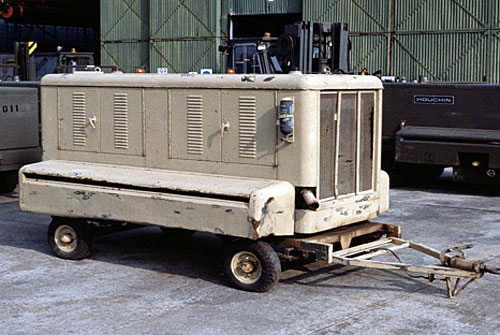
The C130, fully fuelled, had just enough space and trim lee-way to accommodate the Houchin - but not the Land Rover needed to get it on board. Remember, we were not allowed to leave anything behind.
With no obvious need to activate the Op Order in mid 1971, I unilaterally decided, and made a note, that the pragmatic solution would be to drive the last Land Rover off a nearby cliff into the sea, with the driver running back half a mile to board the waiting C130. Thus, went my logic, we would have complied with the constraints imposed upon us. My 2025 personna would, of course, balk at the environmental effect of such a cavalier approach.
With no obvious need to activate the Op Order in mid 1971, I unilaterally decided, and made a note, that the pragmatic solution would be to drive the last Land Rover off a nearby cliff into the sea, with the driver running back half a mile to board the waiting C130. Thus, went my logic, we would have complied with the constraints imposed upon us. My 2025 personna would, of course, balk at the environmental effect of such a cavalier approach.
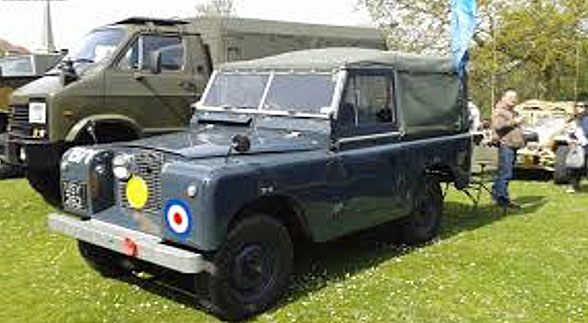
In the event, by April 1972, I was long gone. I understand from subsequent chats with Geoff Britton, that lots of kit was sold off or donated locally and the airlift, sensibly, was considerably reduced from the 50 or 60 flights defined in the Op Order. This was doubly-sensible since all the vehicles were Far East or Middle East surpluses which had found their way to Majunga and were worthless.
I have never had the opportunity to check out with Gerry Keyworth how it all proceeded but if any of the team reads this, I would be delighted to hear from Gerry or, as the F540 tells me, his team there : Bob Hope, DK Henderson, Jimmy Jones, Tim Newstead or Ian Place.
Knowing the fantastic Malagasy capability to make, mend and recycle, I would be happy to take a wager that somewhere around Majunga there are still some RHD Air Force Blue vehicles with yellow roundels doing sterling work.
I have never had the opportunity to check out with Gerry Keyworth how it all proceeded but if any of the team reads this, I would be delighted to hear from Gerry or, as the F540 tells me, his team there : Bob Hope, DK Henderson, Jimmy Jones, Tim Newstead or Ian Place.
Knowing the fantastic Malagasy capability to make, mend and recycle, I would be happy to take a wager that somewhere around Majunga there are still some RHD Air Force Blue vehicles with yellow roundels doing sterling work.
As Aye,
David
David

RAF to supplement refuelling with commercial aircraft
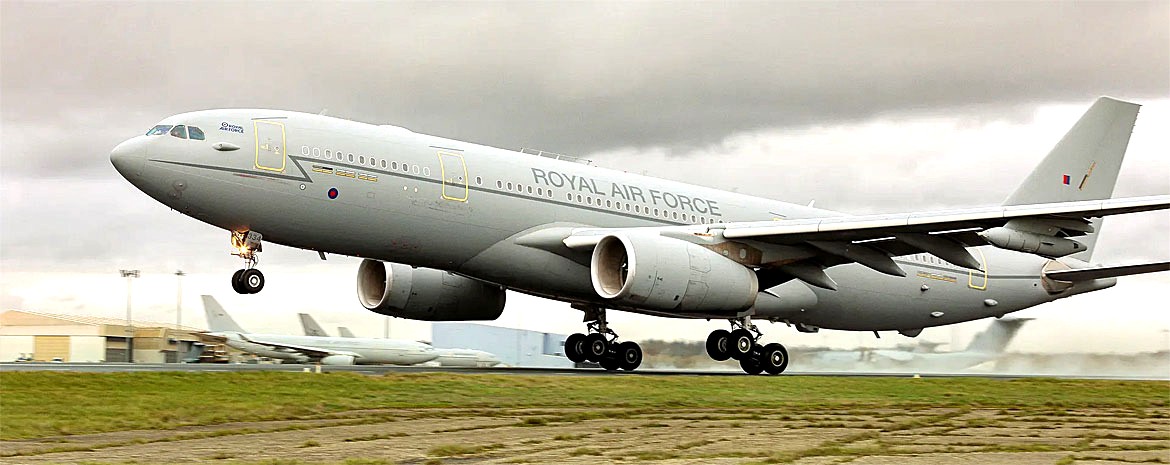
The Royal Air Force is set to deepen its integration with civilian aviation providers, using chartered aircraft to expand its capacity for airlift, troop transport, and even air-to-air refuelling.
The recommendation — part of the latest Strategic Defence Review — reflects growing concerns that existing fleets alone may not meet operational demands in a crisis or prolonged campaign.
The government has confirmed it will implement the full slate of SDR recommendations, including expanding the RAF’s logistics capabilities by augmenting military aircraft with chartered civilian platforms in non-contested environments.
“Augmenting the RAF’s fleet of Voyager, C-17, and A400M aircraft with civilian charter options for transporting people and cargo, and for air-to-air refuelling in non-contested environments, would offer greater flexibility, efficiency, and value for money,” the review explains.
This model is already common among NATO allies, especially the United States, which regularly uses chartered and contracted civilian aircraft to move troops and equipment under its Civil Reserve Air Fleet (CRAF) programme. The UK does not yet operate a formal equivalent but is now poised to adopt a similar approach.
By utilising civilian capacity for non-frontline logistics the RAF could free up its limited high-end assets for combat or high-risk operations. In turn, this would enhance the UK’s resilience and ability to surge during crisis without relying solely on its Voyager or Atlas fleets.
The review also notes that the adoption of civilian refuelling platforms could fill a notable gap in current UK capability, especially as demands on the RAF’s Voyager fleet increase. Charter refuelling options could support training, long-range deployments, or routine tasks, enabling the RAF to preserve military refuelling capacity for operational missions.
ukdefencejournal.org.uk
The recommendation — part of the latest Strategic Defence Review — reflects growing concerns that existing fleets alone may not meet operational demands in a crisis or prolonged campaign.
The government has confirmed it will implement the full slate of SDR recommendations, including expanding the RAF’s logistics capabilities by augmenting military aircraft with chartered civilian platforms in non-contested environments.
“Augmenting the RAF’s fleet of Voyager, C-17, and A400M aircraft with civilian charter options for transporting people and cargo, and for air-to-air refuelling in non-contested environments, would offer greater flexibility, efficiency, and value for money,” the review explains.
This model is already common among NATO allies, especially the United States, which regularly uses chartered and contracted civilian aircraft to move troops and equipment under its Civil Reserve Air Fleet (CRAF) programme. The UK does not yet operate a formal equivalent but is now poised to adopt a similar approach.
By utilising civilian capacity for non-frontline logistics the RAF could free up its limited high-end assets for combat or high-risk operations. In turn, this would enhance the UK’s resilience and ability to surge during crisis without relying solely on its Voyager or Atlas fleets.
The review also notes that the adoption of civilian refuelling platforms could fill a notable gap in current UK capability, especially as demands on the RAF’s Voyager fleet increase. Charter refuelling options could support training, long-range deployments, or routine tasks, enabling the RAF to preserve military refuelling capacity for operational missions.
ukdefencejournal.org.uk

From: Budgie Baigent, Takaka, Tasman
Subject: The Most Unique or Memorable Place
Hi Tony,
You've come up with some great topics again... couldn't resist this opportunity;
In the year 2004 I led an Air Load Team aboard our RNZAF B757, assisting a NZ Ministry of Foreign Affairs senior delegation around several Pacific Islands. One stop was at the Republic of Palau, a group of islands about 1,000Km SW of Guam. While there, our crew joined the delegation to visit Jellyfish Lake which is a marine lake located on Eil Malk Island.
Named for its inhabitants, Jellyfish Lake is a UNESCO World Heritage site and one of the best places in the world to enjoy the otherworldly experience of swimming amongst a sea of jellyfish. Fluorescent green, the lake is home to millions of jellyfish that do not sting.
Quite an incredible memory, swimming with jellyfish in a fresh water lake in the middle of a small island! Hard to describe other than saying that at times it was like swimming through a bath of semolina.
The Palauan people were great hosts and how can one not enjoy a government sponsored tour through some of the Pacific’s majestic islands – one of my better deployments.
Cheers, Budgie
Subject: The Most Unique or Memorable Place
Hi Tony,
You've come up with some great topics again... couldn't resist this opportunity;
In the year 2004 I led an Air Load Team aboard our RNZAF B757, assisting a NZ Ministry of Foreign Affairs senior delegation around several Pacific Islands. One stop was at the Republic of Palau, a group of islands about 1,000Km SW of Guam. While there, our crew joined the delegation to visit Jellyfish Lake which is a marine lake located on Eil Malk Island.
Named for its inhabitants, Jellyfish Lake is a UNESCO World Heritage site and one of the best places in the world to enjoy the otherworldly experience of swimming amongst a sea of jellyfish. Fluorescent green, the lake is home to millions of jellyfish that do not sting.
Quite an incredible memory, swimming with jellyfish in a fresh water lake in the middle of a small island! Hard to describe other than saying that at times it was like swimming through a bath of semolina.
The Palauan people were great hosts and how can one not enjoy a government sponsored tour through some of the Pacific’s majestic islands – one of my better deployments.
Cheers, Budgie
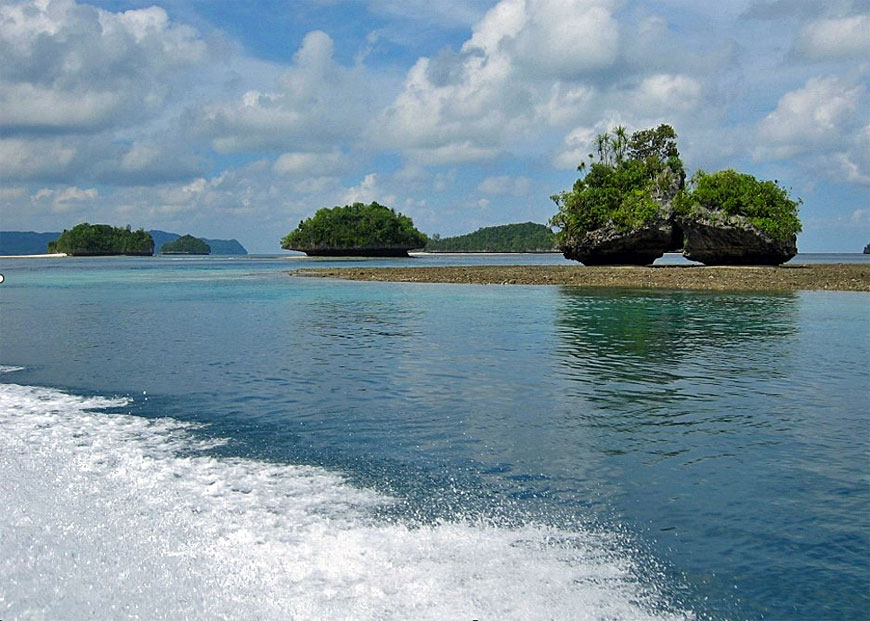
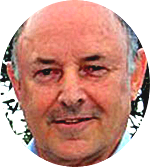

From: Duncan Grant, Edinburgh
Subject: My Memorable Location(s)
Dear Tony,
Unlike many of the younger and not so young generation, I cannot compete with the tales of derring-do in darkest Africa, Asia or the like.
However, as I reflect on the various locations I travelled to at the expense of HMG in my 33 years of a paid hobby, I cannot resist pointing out a number of locations that included the boundaries of the Arctic and Antarctic, Westabout to Los Angeles and points within the USA and Eastabout to Hong Kong. Here goes with but a few:
Paris ~ In 1963 a long weekend on exchange with L’Armee D’Air whilst a teenage Halton Apprentice. A great education!
Wildenrath ~ A hazy Britannia night stop on the Movements course in 1968.
Nizwa ~ Muscat, a refreshing dip in gin-clear oasis water during a 1969 stopover whilst deputy convoy commander prepositioning F34 in 45-gallon drums at Firq and Saiq. I did not take kindly to being armed in defence of the nation!
Hong Kong ~ Frequent staff visits between 1977 and 1994 in various guises including my retirement “staff tour". Privileged to play a round of golf with Alan Potts in what was then the Royal Hong Kong Golf Course and a helicopter trip courtesy of 28 Squadron along the border with China,
New York ~ Finally, in 1994, my third visit. Cheating a bit here - I cannot forget travelling to and from New York by Concorde courtesy of British Airways; a story in itself!
I made the most of my travel opportunities!
All the best,
Duncan
Subject: My Memorable Location(s)
Dear Tony,
Unlike many of the younger and not so young generation, I cannot compete with the tales of derring-do in darkest Africa, Asia or the like.
However, as I reflect on the various locations I travelled to at the expense of HMG in my 33 years of a paid hobby, I cannot resist pointing out a number of locations that included the boundaries of the Arctic and Antarctic, Westabout to Los Angeles and points within the USA and Eastabout to Hong Kong. Here goes with but a few:
Paris ~ In 1963 a long weekend on exchange with L’Armee D’Air whilst a teenage Halton Apprentice. A great education!
Wildenrath ~ A hazy Britannia night stop on the Movements course in 1968.
Nizwa ~ Muscat, a refreshing dip in gin-clear oasis water during a 1969 stopover whilst deputy convoy commander prepositioning F34 in 45-gallon drums at Firq and Saiq. I did not take kindly to being armed in defence of the nation!
Hong Kong ~ Frequent staff visits between 1977 and 1994 in various guises including my retirement “staff tour". Privileged to play a round of golf with Alan Potts in what was then the Royal Hong Kong Golf Course and a helicopter trip courtesy of 28 Squadron along the border with China,
New York ~ Finally, in 1994, my third visit. Cheating a bit here - I cannot forget travelling to and from New York by Concorde courtesy of British Airways; a story in itself!
I made the most of my travel opportunities!
All the best,
Duncan
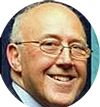

Sharing the Load Between Nations
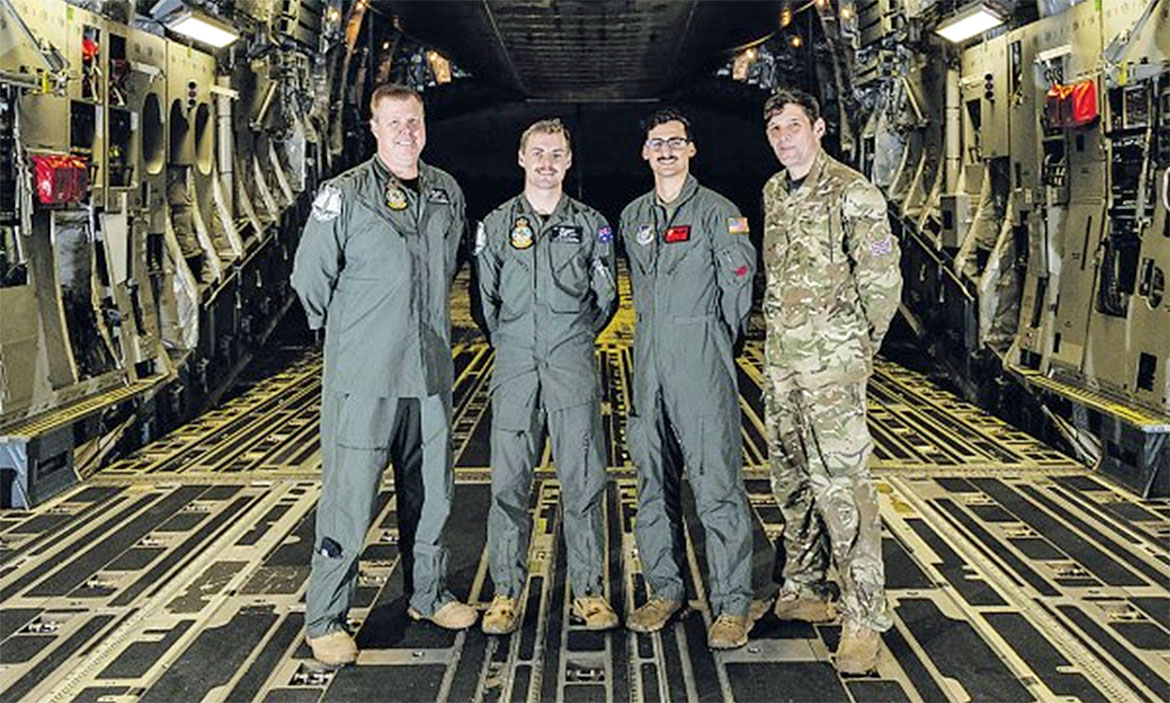
RAAF loadmasters FSGT Stephen Brooks and CPL Jake Willington, Pacific Air Forces (US) loadmaster Senior Airman Aniel Reina and
RAF loadmaster SGT Iain Blears on a RAAF C-17A Globemaster III at RAAF Base Amberley during Exercise Global Dexterity 25-1.
RAF loadmaster SGT Iain Blears on a RAAF C-17A Globemaster III at RAAF Base Amberley during Exercise Global Dexterity 25-1.
In today’s dynamic operating environment, adaptability isn’t just a useful skillset – it’s a strategic necessity.
Loadmasters from four partner nations proved their interoperable readiness in the latest air mobility exercise, training to operate foreign force aircraft as effortlessly as borrowing a mate’s car.
Under Exercise Global Dexterity 25-1, ground and aircrew from the RAAF, Royal Air Force, Royal Canadian Air Force and United States Pacific Air Force showcased their versatility, conducting mixed crew flying aboard each other’s C-17A Globemaster III variants.
RAF loadmaster SGT Iain Blears likened the experience to borrowing a friend’s car. “Once you figure out where the controls are, you already know how to drive,” SGT Blears said. “That’s how it works when operating our partner nations’ aircraft. The principles are very much the same – we just go about the task as normal.”
For those RAF loadmasters, returning to Australia for Global Dexterity was a special reunion, as RAF C-17 crews conduct their loadmaster employment training at RAAF Base Amberley. The three-month specialised course includes extensive training on the C-17 aircraft systems, enabling loadmasters to work with allied mobility operations and foreign crews quickly – no matter the emblem on the tail. “I’m thrilled, happy and proud to be back at RAAF Base Amberley,” SGT Blears said. “It’s an opportunity to refine our skillsets, learn from each other’s techniques and prove that we can operate seamlessly as a combined team.”
Loadmasters from four partner nations proved their interoperable readiness in the latest air mobility exercise, training to operate foreign force aircraft as effortlessly as borrowing a mate’s car.
Under Exercise Global Dexterity 25-1, ground and aircrew from the RAAF, Royal Air Force, Royal Canadian Air Force and United States Pacific Air Force showcased their versatility, conducting mixed crew flying aboard each other’s C-17A Globemaster III variants.
RAF loadmaster SGT Iain Blears likened the experience to borrowing a friend’s car. “Once you figure out where the controls are, you already know how to drive,” SGT Blears said. “That’s how it works when operating our partner nations’ aircraft. The principles are very much the same – we just go about the task as normal.”
For those RAF loadmasters, returning to Australia for Global Dexterity was a special reunion, as RAF C-17 crews conduct their loadmaster employment training at RAAF Base Amberley. The three-month specialised course includes extensive training on the C-17 aircraft systems, enabling loadmasters to work with allied mobility operations and foreign crews quickly – no matter the emblem on the tail. “I’m thrilled, happy and proud to be back at RAAF Base Amberley,” SGT Blears said. “It’s an opportunity to refine our skillsets, learn from each other’s techniques and prove that we can operate seamlessly as a combined team.”
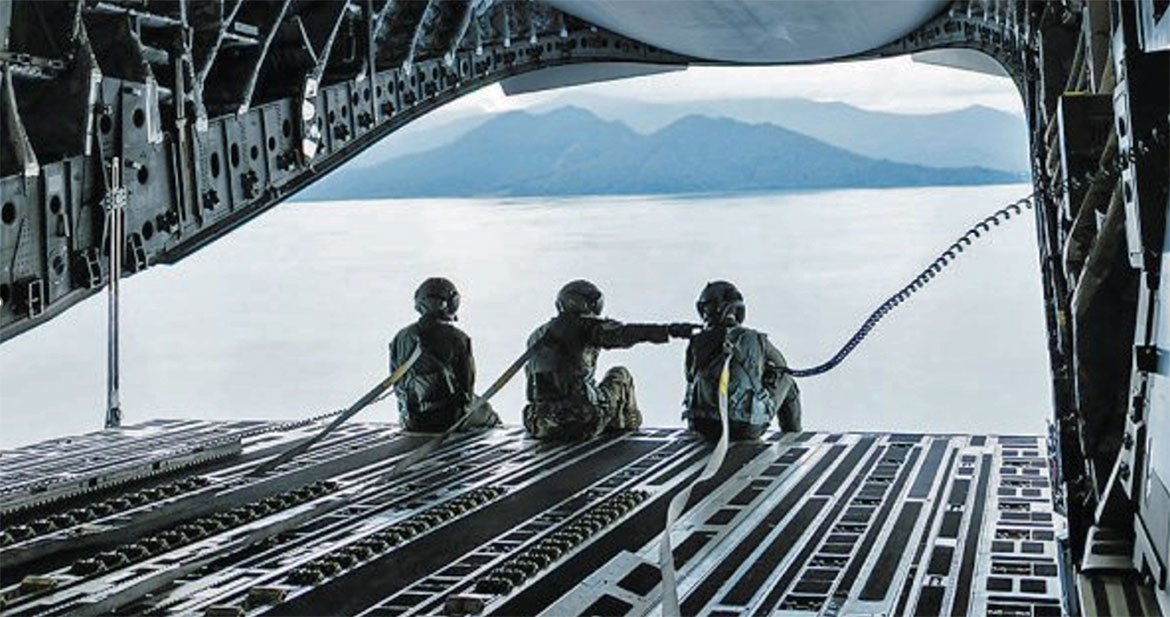
Senior Airman Reina, SGT Blears and CPL Willington sit on the ramp of a C-17A Globemaster III while low-level flying over Papua New Guinea.
airforcenewspaper.defence.gov.au

From: George Graves, Carlisle, Cumbria
Subject: The Most Unique or Memorable Place
Hi Tony,
Whilst serving on FEAF MAMS, I was lucky enough to be part of the team tasked with a job in Fiji.
After work on the first day, the Fijian rugby team, who had hitched a lift on our Herc from Changi following their tour in Singapore, showed Tony Dunphy, myself and two others around the city and the night life.
What a memorable three days we had in Suva; we found all the men and women to be very friendly people.
Regards,
George
Subject: The Most Unique or Memorable Place
Hi Tony,
Whilst serving on FEAF MAMS, I was lucky enough to be part of the team tasked with a job in Fiji.
After work on the first day, the Fijian rugby team, who had hitched a lift on our Herc from Changi following their tour in Singapore, showed Tony Dunphy, myself and two others around the city and the night life.
What a memorable three days we had in Suva; we found all the men and women to be very friendly people.
Regards,
George
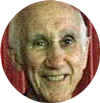

From: Keri Eynon, Thatcham, Berks
Subject: The Most Unique or Memorable Place
Hi Tony,
Once again thanks for the newsletter; really appreciate the work you put in to keep us up-to-date of people and circumstances, especially as we bid farewell to our old comrades. Your proposed topic this month made me aware of some of the places I was lucky enough to see/visit. Some places, for whatever reason, made an impression - be it very big or very small, man-made or work of nature - they left an impression.
Thinking back over 50 plus years really woke me up as to what I had witnessed, so here goes. There were 4 occasions that made certain impressions on me, so, not in any particular order they are:
Disney World in Florida in 1974 which was well into construction (if I remember rightly the entrance fee was $4 just going round the place was impressive and I imagined what it would eventually become (experienced that in 1988 as a swan trip from the RAF).
The next place was to San Francisco, we were waiting there for an air engineer to be flown out, replacing one that was medically unfit to fly. Here I had the chance to experience Fisherman's Wharf and have a meal there, but better still was the visit to Alcatraz (on our wedding anniversary I was able to revisit San Francisco and see "The Rock" again).
The Next place that I was able to visit was in 1971 when we went up Table Mountain in Cape Town, having had two days off after delivering a marine engine. The view from the cable car,on both up and down journeys and from the top as the "Table Cloth" (clouds) blew across blocking the view of Cape Town then to suddenly see it reappear as the cloth moved on was to me one of the moments of nature taking charge.
My final memorable destination, I suppose looking back being the most impressive, was to the Pyramids in Egypt. We were fortunate that the Air Attaché had been able to book us a tour inside the Pyramid causing me, at least, to marvel at the fresh air circulating when one considers the amount of rocks etc., used to construct the pyramids; I still marvel at it. However it was not the end as we were lucky enough to experience the Sonne et Luminere (Sound and Light show) put on and we were fortunate enough in that evening it was in English. So, to sit out in the open, with the Pyramids and Sphinx coming and going in and out of sight and sound was something I will never forget.
Subject: The Most Unique or Memorable Place
Hi Tony,
Once again thanks for the newsletter; really appreciate the work you put in to keep us up-to-date of people and circumstances, especially as we bid farewell to our old comrades. Your proposed topic this month made me aware of some of the places I was lucky enough to see/visit. Some places, for whatever reason, made an impression - be it very big or very small, man-made or work of nature - they left an impression.
Thinking back over 50 plus years really woke me up as to what I had witnessed, so here goes. There were 4 occasions that made certain impressions on me, so, not in any particular order they are:
Disney World in Florida in 1974 which was well into construction (if I remember rightly the entrance fee was $4 just going round the place was impressive and I imagined what it would eventually become (experienced that in 1988 as a swan trip from the RAF).
The next place was to San Francisco, we were waiting there for an air engineer to be flown out, replacing one that was medically unfit to fly. Here I had the chance to experience Fisherman's Wharf and have a meal there, but better still was the visit to Alcatraz (on our wedding anniversary I was able to revisit San Francisco and see "The Rock" again).
The Next place that I was able to visit was in 1971 when we went up Table Mountain in Cape Town, having had two days off after delivering a marine engine. The view from the cable car,on both up and down journeys and from the top as the "Table Cloth" (clouds) blew across blocking the view of Cape Town then to suddenly see it reappear as the cloth moved on was to me one of the moments of nature taking charge.
My final memorable destination, I suppose looking back being the most impressive, was to the Pyramids in Egypt. We were fortunate that the Air Attaché had been able to book us a tour inside the Pyramid causing me, at least, to marvel at the fresh air circulating when one considers the amount of rocks etc., used to construct the pyramids; I still marvel at it. However it was not the end as we were lucky enough to experience the Sonne et Luminere (Sound and Light show) put on and we were fortunate enough in that evening it was in English. So, to sit out in the open, with the Pyramids and Sphinx coming and going in and out of sight and sound was something I will never forget.


Tony, these are what came to mind by your topic proposal and I am just lucky to have been around on certain tasks that fell in line perfectly to enable me to enjoy them.
Cheers and keep up the good work!
Keri
Cheers and keep up the good work!
Keri

From: David Powell, Princes Risborough, Bucks
Subject: The Most Unique or Memorable Place
Hi Tony,
Identify the most unique or memorable destination visited during my air force service? That was a tough one! I was so lucky in my thirty years in uniform. Which to choose?
Northern Lights at Bardufoss.
Sitting on an Argosy wing refueling by hand.
Lit by flares in the pine trees at night in the Admiralty Islands.
Train spotting in the Falklands.
Nighttime aerobatics in a Jet Provost with the duty instructor.
However, for my most memorable event was when, with the other Gulf MAMS team members, we were camping overnight on what was then a strip, and today is an airport, outside Saiq. This is a small town in North Eastern Oman. Basically, the task was loading a pair of rotor-blades-turning Sharjah-based Wessex, lifting supplies and equipment brought in by lorry to a nearby (horizontally if not vertically) mountain top observation post.
It seemed like a good idea at the time that, for a change, we would deploy with overnight camping kit, rations and water on the first helicopter and hitch a ride back after the last lift the following day.
Subject: The Most Unique or Memorable Place
Hi Tony,
Identify the most unique or memorable destination visited during my air force service? That was a tough one! I was so lucky in my thirty years in uniform. Which to choose?
Northern Lights at Bardufoss.
Sitting on an Argosy wing refueling by hand.
Lit by flares in the pine trees at night in the Admiralty Islands.
Train spotting in the Falklands.
Nighttime aerobatics in a Jet Provost with the duty instructor.
However, for my most memorable event was when, with the other Gulf MAMS team members, we were camping overnight on what was then a strip, and today is an airport, outside Saiq. This is a small town in North Eastern Oman. Basically, the task was loading a pair of rotor-blades-turning Sharjah-based Wessex, lifting supplies and equipment brought in by lorry to a nearby (horizontally if not vertically) mountain top observation post.
It seemed like a good idea at the time that, for a change, we would deploy with overnight camping kit, rations and water on the first helicopter and hitch a ride back after the last lift the following day.
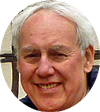
To the North, a few miles away was the town, to the east the mountains. For the rest, just rolling emptiness. Once the Wessex had flown home after the first day’s lifts, we were left surrounded by an almost overwhelming stillness and the total absence of sound. Come the morning and just setting up our ration pack breakfast, out of the nothingness of the South West appeared two Omani horsemen. It was like something out of a David Lean film, but without the Lawrence of Arabia music. However, as they got closer, what was very apparent was that, apart from their magnificent horses, each rider had a very impressive rifle hanging upside down on its rifle strap over the right shoulder, and just a trigger-pull away from action.
Quite obviously from their silence, expressions and body language, we were on their patch. However, a big smile, a quickly remembered ‘sabah al-khair’ (good morning) and ‘ana jundiyy’ (we are military) followed by flapping arms and pointing to the mountain tops, appeared to sort things out. Or, maybe it was the offer of a Spam sandwich. But, without another word, they galloped off towards Saiq, probably for a coffee and reports of mad Englishmen in the vicinity.
So that’s my memorable and unique offering. Just close my eyes and I am back there, 54 years ago.
Best wishes
David Powell Gulf MAMF 1971
Quite obviously from their silence, expressions and body language, we were on their patch. However, a big smile, a quickly remembered ‘sabah al-khair’ (good morning) and ‘ana jundiyy’ (we are military) followed by flapping arms and pointing to the mountain tops, appeared to sort things out. Or, maybe it was the offer of a Spam sandwich. But, without another word, they galloped off towards Saiq, probably for a coffee and reports of mad Englishmen in the vicinity.
So that’s my memorable and unique offering. Just close my eyes and I am back there, 54 years ago.
Best wishes
David Powell Gulf MAMF 1971
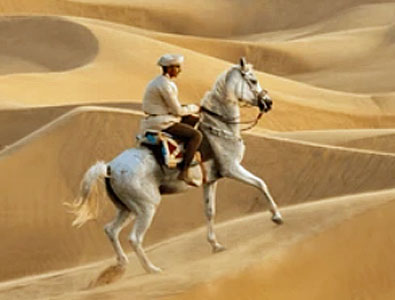

A new member joining us recently is:
Alan Farnsworth, Beadlam, North Yorks
Welcome to the OBA!

British Nationals Board RAF Emergency Flight out of Israel
Keir Starmer urged British nationals in Israel and the Occupied Palestinian Territories to make contact with the Foreign Office as it prepared for an evacuation flight. Around 63 people took off from Tel Aviv airport on June 23, 2025, headed for a base in Larnaca, Cyprus.
Flights from Tel Aviv’s Ben Gurion Airport had been suspended since June 13 amid the ongoing conflict, but were announced to resume to help stranded foreigners return home.
Flights from Tel Aviv’s Ben Gurion Airport had been suspended since June 13 amid the ongoing conflict, but were announced to resume to help stranded foreigners return home.
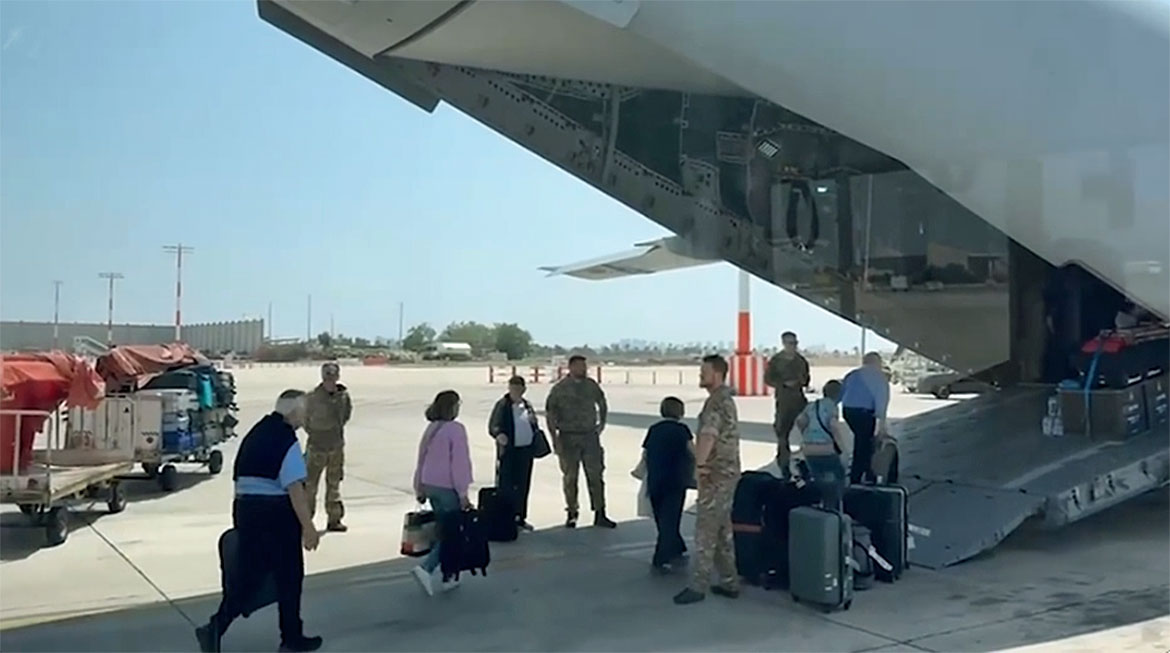
This is the moment British nationals boarded a Royal Air Force plane out of Israel -
one of the first emergency evacuations since the US attacked nuclear sites in Iran.
one of the first emergency evacuations since the US attacked nuclear sites in Iran.
msn.com/News4

RNZAF Sends Evacuation Assistance to the Middle East
Our C-130J Hercules aircraft and crew from No. 40 Squadron that departed Auckland on Monday has arrived in the Middle East as part of New Zealand’s contingency plans in preparation for supporting New Zealanders seeking to leave Iran and Israel.
The aircraft and other NZ Defence Force personnel are positioned in the Middle East, standing ready to assist if needed. They are in the region ready to operate out of a staging area, if called on to assist.
LTCOL Thomas Kelly, Senior National Officer, said: “We recognise the complexity and challenges of the situation ahead. Our team is well-prepared and postured to respond within the Middle East Region. Our priority is to work alongside the Ministry of Foreign Affairs and Trade staff to support those affected, to ensure we provide the care and urgency the situation demands”.
The aircraft and other NZ Defence Force personnel are positioned in the Middle East, standing ready to assist if needed. They are in the region ready to operate out of a staging area, if called on to assist.
LTCOL Thomas Kelly, Senior National Officer, said: “We recognise the complexity and challenges of the situation ahead. Our team is well-prepared and postured to respond within the Middle East Region. Our priority is to work alongside the Ministry of Foreign Affairs and Trade staff to support those affected, to ensure we provide the care and urgency the situation demands”.
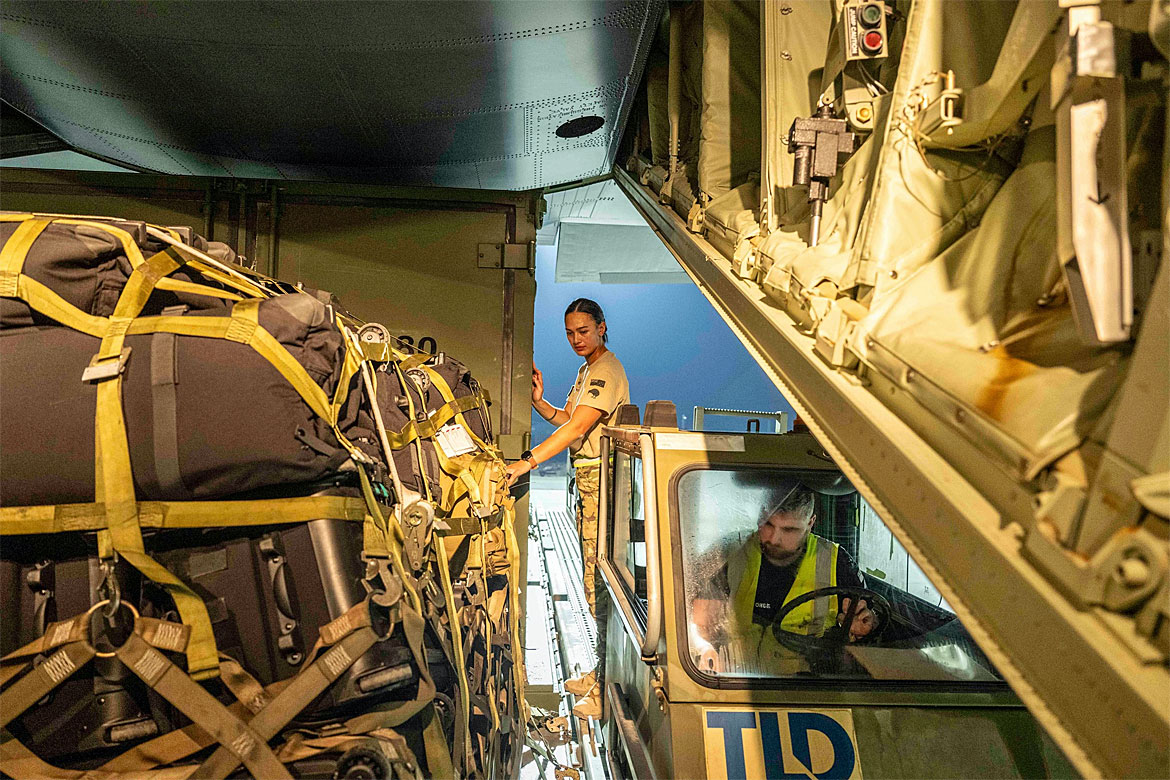
Facebook Page - RNZAF Air Movements-Movers Past and Present

From: Liam Devlin, Port Talbot, West Glamorgan
Subject: The Most Unique or Memorable Place
Hi Tony,
I went out to Australia on a VC10 loaded with explosives. We travelled out via Bahrain, Sri Lanka and Hong Kong to Richmond RAAF Base.
The return trip took us to Fiji, and by the time we got there the crew was due for an extended stop over. Being a non-drinker, I wasn’t interested in spending the time in the swimming pool bar. So, at breakfast I asked the hotel manager if he could arrange for me to have a look around, I said I’ve only got 25 US dollars. Following breakfast, he introduced me to a taxi driver who was going off duty. This new driver asked if I minded if he could take his off going driver home to his village, so we set off through the sugar cane fields. When we got to his village the head man was pleased when he was told I was British and not an Australian. He made me a cup of tea in a cocktail glass. First in the glass went the condensed milk followed by the sugar then the tea! Even for my sweet tooth, this cuppa was SWEET!
I was seated on a chair in the middle of the village. It was like scene from the Elvis film "Blue Hawaii"! Eventually we set off through a local town where once again the locals were very friendly to a non-Aussie In due course, I got back to the hotel and departed for the USA next morning. Not a usual trip but a thoroughly enjoyable one.
Regards,
Liam
Subject: The Most Unique or Memorable Place
Hi Tony,
I went out to Australia on a VC10 loaded with explosives. We travelled out via Bahrain, Sri Lanka and Hong Kong to Richmond RAAF Base.
The return trip took us to Fiji, and by the time we got there the crew was due for an extended stop over. Being a non-drinker, I wasn’t interested in spending the time in the swimming pool bar. So, at breakfast I asked the hotel manager if he could arrange for me to have a look around, I said I’ve only got 25 US dollars. Following breakfast, he introduced me to a taxi driver who was going off duty. This new driver asked if I minded if he could take his off going driver home to his village, so we set off through the sugar cane fields. When we got to his village the head man was pleased when he was told I was British and not an Australian. He made me a cup of tea in a cocktail glass. First in the glass went the condensed milk followed by the sugar then the tea! Even for my sweet tooth, this cuppa was SWEET!
I was seated on a chair in the middle of the village. It was like scene from the Elvis film "Blue Hawaii"! Eventually we set off through a local town where once again the locals were very friendly to a non-Aussie In due course, I got back to the hotel and departed for the USA next morning. Not a usual trip but a thoroughly enjoyable one.
Regards,
Liam


From: Ian Berry, Eastleaze, Swindon, Wilts
Subject: The Most Unique or Memorable Places
Hi Tony,
In my many tours on UKMAMS, both Mobile and Base, I managed to "get around a bit!" There are a few memorable places I visited, both good and bad, but the three tasks that stick out are;
1) My detachment to the Sudan with a 46 Squadron Andover on Exercise Mirza II. Lots of rough strip landings, including a few at Tonj, South Sudan, which was an airstrip built for us by the Royal Engineers.
Subject: The Most Unique or Memorable Places
Hi Tony,
In my many tours on UKMAMS, both Mobile and Base, I managed to "get around a bit!" There are a few memorable places I visited, both good and bad, but the three tasks that stick out are;
1) My detachment to the Sudan with a 46 Squadron Andover on Exercise Mirza II. Lots of rough strip landings, including a few at Tonj, South Sudan, which was an airstrip built for us by the Royal Engineers.
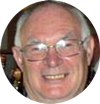
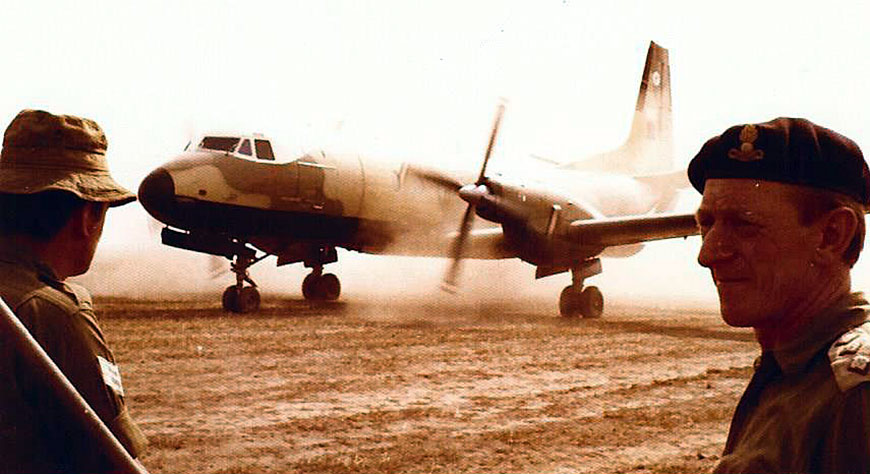
An Andover arriving at Tonj, South Sudan
2) I too made Sharjah, but it was after the RAF station had closed, even though all the facilities remained and the SAS were living there. We were handling Britannia's and C130 Hercules at Sharjah and supporting the Victor tankers at Dubai. Both locations had small population, and there were none of the high rise buildings that are there today. I also logged my shortest flight whilst there; Sharjah - Dubai on XV302 taking 4 minutes! it was loaded with 6 x 25kva power sets.
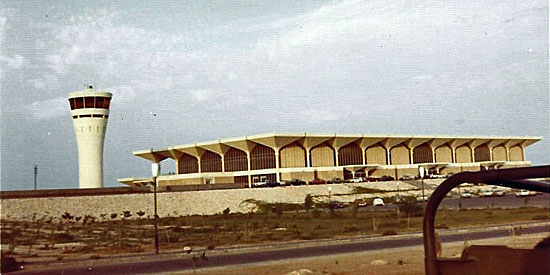
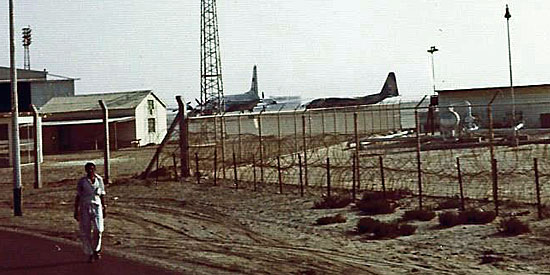
The former RAF Sharjah - note the Britannia and Hercules
Dubai International Airport circa early '70's
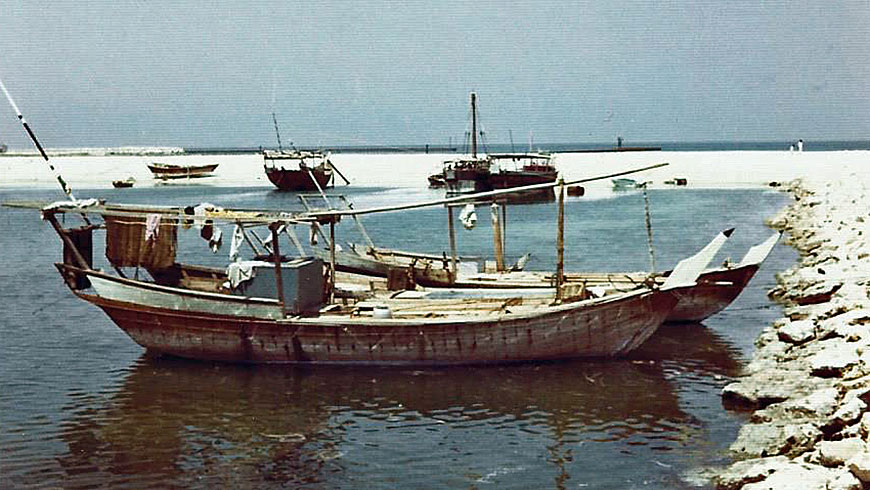
A dhow on the waterfront at Sharjah
3) The third memorable trip was a Belfast task to Cape Canaveral to recover Skynet II equipment. This task too was chartered by Marconi. I've attached an article I wrote in 2018 for the Swindon Aviation Group Newsletter which says it all.
SKYNET 2B – TO INFINITY AND BEYOND...
Until 1969, only the USA and USSR operated military communications satellites. However, that year, the UK had its first military communications satellite built by Marconi in Portsmouth. It was launched that year from Cape Canaveral in Florida utilising a US built Thor Delta rocket. The satellite system was called Skynet and this was the launch of Skynet 1.
In January 1974, a second satellite was built, Skynet 2, and was launched by another Delta rocket from Canaveral. Sadly, the rocket malfunctioned, and so a second satellite was built. The planned launch of Skynet 2B was planned for that November.
That month, my team was tasked to deploy to Cape Canaveral Air Station and recover all the satellite test equipment and transit packaging used to deploy the satellite from the UK. The plan was to palletise all this equipment on behalf of Marconi and recover it on a Belfast C1 back to UK. We would fly it to RAF Thorney Island, the nearest airfield to Portsmouth. Consequently we deployed on Belfast XR367 (Heracles) with the recovery equipment we needed and headed for Patrick AFB, near Cocoa Beach, Florida. This was on the 18th November.
In January 1974, a second satellite was built, Skynet 2, and was launched by another Delta rocket from Canaveral. Sadly, the rocket malfunctioned, and so a second satellite was built. The planned launch of Skynet 2B was planned for that November.
That month, my team was tasked to deploy to Cape Canaveral Air Station and recover all the satellite test equipment and transit packaging used to deploy the satellite from the UK. The plan was to palletise all this equipment on behalf of Marconi and recover it on a Belfast C1 back to UK. We would fly it to RAF Thorney Island, the nearest airfield to Portsmouth. Consequently we deployed on Belfast XR367 (Heracles) with the recovery equipment we needed and headed for Patrick AFB, near Cocoa Beach, Florida. This was on the 18th November.
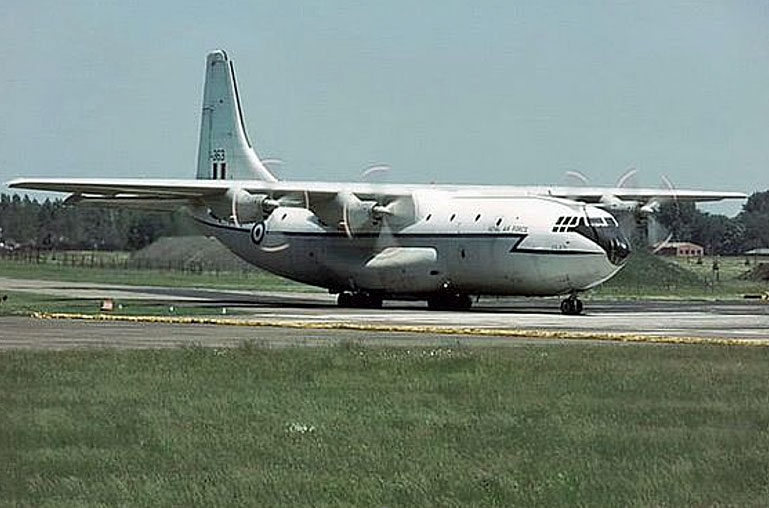
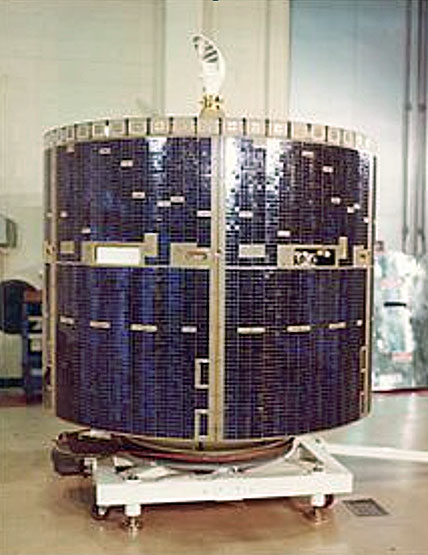
Skynet Satellite
Belfast C1 XR363 (Goliath) - the recovery aircraft
On board with us was another six man team who were on a separate task and this was “their” aircraft. They were heading for Homestead AFB, near Miami. On the way out we night stopped at Lajes Naval Air Station in the Azores before heading South and West. You can imagine the stop was quite an entertaining night with the operating crew and two MAMS teams including lots of jovial banter!
All went well on the next leg but as we progressed with a quick refuelling stop in Bermuda, the Florida weather had deteriorated and we were unable to land at Patrick AFB. Eventually we diverted to Shaw AFB, near Sumter in South Carolina. None of us had been to this base before and it transpired it was a huge base for RF-4C Phantoms operating in the reconnaissance role. As we taxied past them, the line of aircraft seemed endless. After our previous night of socialising this one was more subdued, possibly because there was a lack of bars!
All went well on the next leg but as we progressed with a quick refuelling stop in Bermuda, the Florida weather had deteriorated and we were unable to land at Patrick AFB. Eventually we diverted to Shaw AFB, near Sumter in South Carolina. None of us had been to this base before and it transpired it was a huge base for RF-4C Phantoms operating in the reconnaissance role. As we taxied past them, the line of aircraft seemed endless. After our previous night of socialising this one was more subdued, possibly because there was a lack of bars!
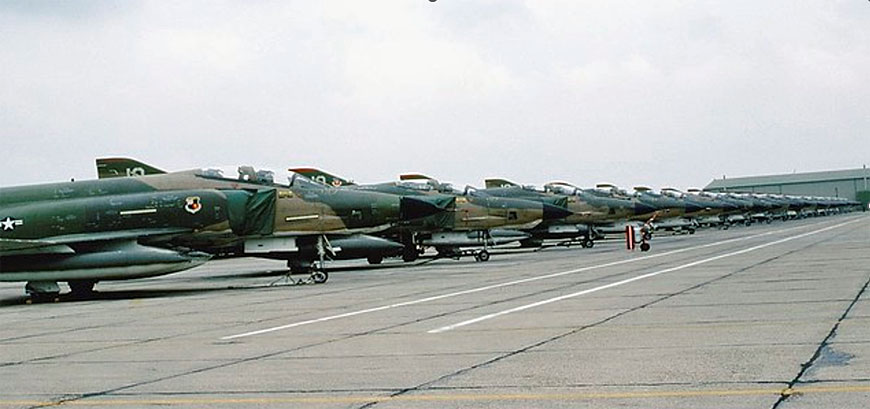
Shaw AFB - Flight Line RF4C Phantoms
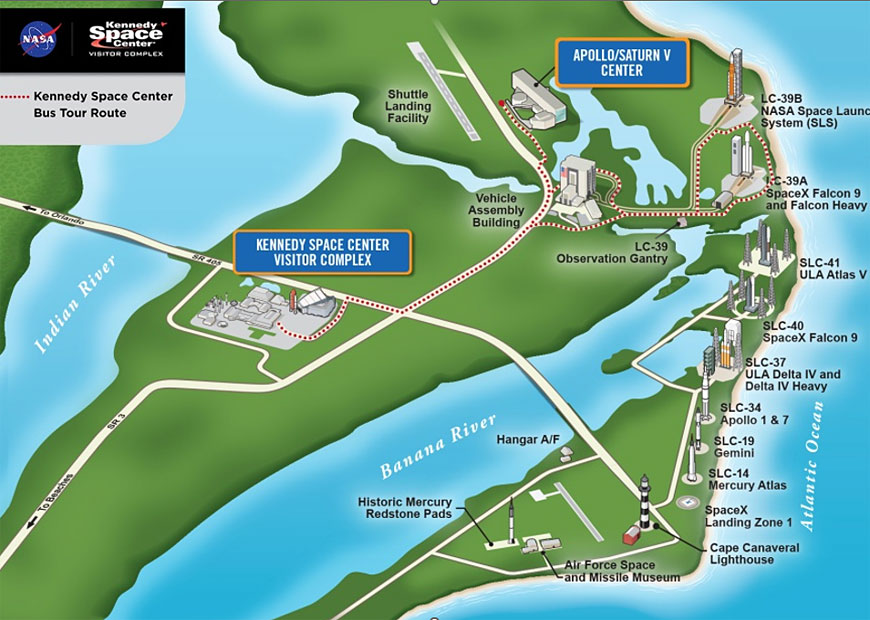
Cape Canaveral Complex
The next day (20th) all was good and we arrived at Patrick AFB quite early in the day. Transport was already there to collect the equipment we had brought and we offloaded the Belfast with the assistance of the other team. This enabled the Team Leader and Flight Sergeant to visit the local car hire firm and rent two cars. As the day progressed we followed the USAF transport in our rentals to Cape Canaveral Air Station, not too far away. Once there we arrived at an installation where the satellite had been prepared for launch and the test equipment to be recovered to UK was housed.
We were slightly taken aback when the Marconi Rep told us we couldn’t start preparing or recovering any of the equipment yet – the reason being the launch hadn’t happened yet and was not due until the 23rd! How sad, an enforced stop in Florida! It just got better when the Facilities Manager advised us that there was to be a rocket launch the following evening and we were welcome to watch it from the roof of his facility. Once we had done what we could in advance we then adjourned to our Motel which was in Cocoa Beach.
With time on our hands and hire cars too we explored what the local area had to offer. Cocoa Beach is a very pleasant small town and most of its occupants seemed to be involved with NASA or rocketry. Most of the bars had that theme too. There were also some fantastic beaches which ran down and passed Patrick AFB. The whole area was known as the Satellite Coast. That evening, we were back at the Cape Canaveral facility where Marconi was operating from. As promised we were allowed onto the roof of this six storey facility. The launch was scheduled for 23.45, by which time it was obviously dark. The rocket which was due to launch from Complex 36 was an Atlas Centaur Rocket. The payload was an Intelsat communications satellite.
We were slightly taken aback when the Marconi Rep told us we couldn’t start preparing or recovering any of the equipment yet – the reason being the launch hadn’t happened yet and was not due until the 23rd! How sad, an enforced stop in Florida! It just got better when the Facilities Manager advised us that there was to be a rocket launch the following evening and we were welcome to watch it from the roof of his facility. Once we had done what we could in advance we then adjourned to our Motel which was in Cocoa Beach.
With time on our hands and hire cars too we explored what the local area had to offer. Cocoa Beach is a very pleasant small town and most of its occupants seemed to be involved with NASA or rocketry. Most of the bars had that theme too. There were also some fantastic beaches which ran down and passed Patrick AFB. The whole area was known as the Satellite Coast. That evening, we were back at the Cape Canaveral facility where Marconi was operating from. As promised we were allowed onto the roof of this six storey facility. The launch was scheduled for 23.45, by which time it was obviously dark. The rocket which was due to launch from Complex 36 was an Atlas Centaur Rocket. The payload was an Intelsat communications satellite.
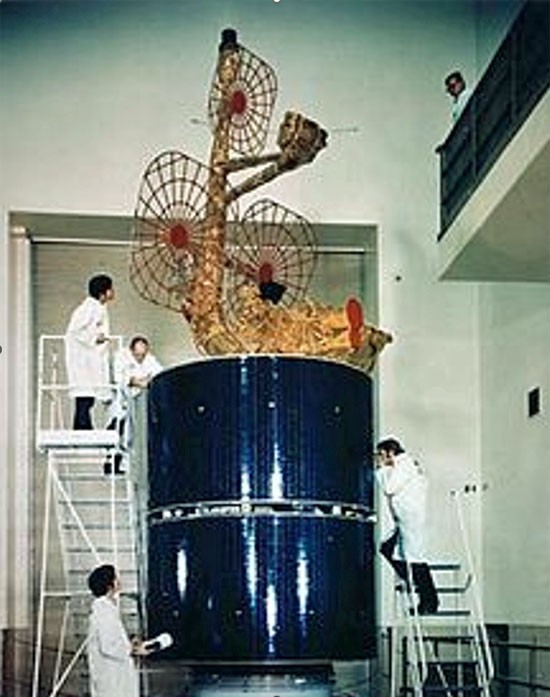
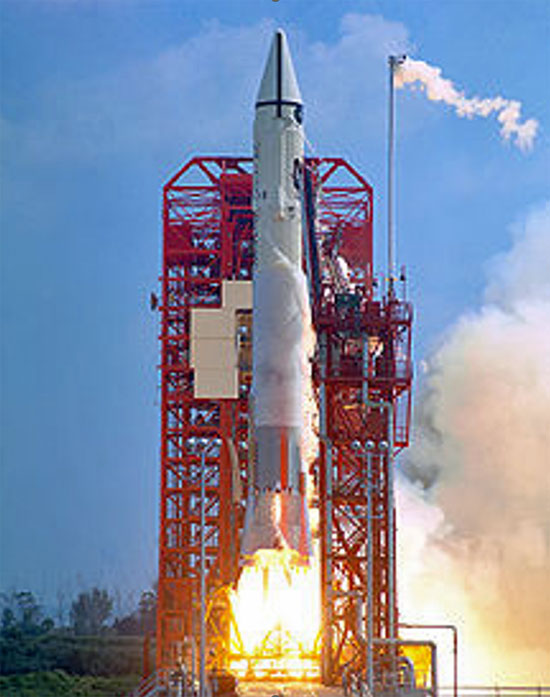
Intelsat Communications Satellite
Atlas-Centaur Rocket
I estimate we were just some two miles away from the launch pad itself and as everything was floodlit the visibility was good. The launch went without a hitch and the whole experience was unbelievable. I just could not believe what I had witnessed and how close to it as well, I must write about it someday! Shortly after things quietened down we thanked our host and retired to the Motel for a “Sundowner” before bed. The next day (22nd) was another free day, what to do? We thought at breakfast. The waitress mentioned that in Orlando, some 60 miles away, Disneyworld had opened some 18 months before.
Say no more! After breakfast, three of us piled into one of the hire cars and off we went. The roads and route was so simple we were there within 75 minutes. Yet another experience of a lifetime and totally unplanned. It was quite sad to reflect that the other three of our team were not as adventurous and got as far as the nearest bar! I’m sure we three all came back with “Mickey Mouse” hats, just to rub it in!
Finally we arrived at the day of the launch of our own satellite (23rd). It was due to launch early evening. Just to confirm the recovery plan we visited Base Ops at Patrick AFB as the recovery Belfast was arriving there the following day and night stopping as no aircraft were allowed to stay overnight at Skid Strip as the Canaveral Airfield was known. Whilst we were there one of the last Comet C2R aircraft of 51 Sqn RAF Wyton arrived, it was carrying the AOC Air Support Command who was attending the launch. Not wanting to get involved we moved on to Canaveral to agree start timings the next day with the Marconi Party.
Say no more! After breakfast, three of us piled into one of the hire cars and off we went. The roads and route was so simple we were there within 75 minutes. Yet another experience of a lifetime and totally unplanned. It was quite sad to reflect that the other three of our team were not as adventurous and got as far as the nearest bar! I’m sure we three all came back with “Mickey Mouse” hats, just to rub it in!
Finally we arrived at the day of the launch of our own satellite (23rd). It was due to launch early evening. Just to confirm the recovery plan we visited Base Ops at Patrick AFB as the recovery Belfast was arriving there the following day and night stopping as no aircraft were allowed to stay overnight at Skid Strip as the Canaveral Airfield was known. Whilst we were there one of the last Comet C2R aircraft of 51 Sqn RAF Wyton arrived, it was carrying the AOC Air Support Command who was attending the launch. Not wanting to get involved we moved on to Canaveral to agree start timings the next day with the Marconi Party.
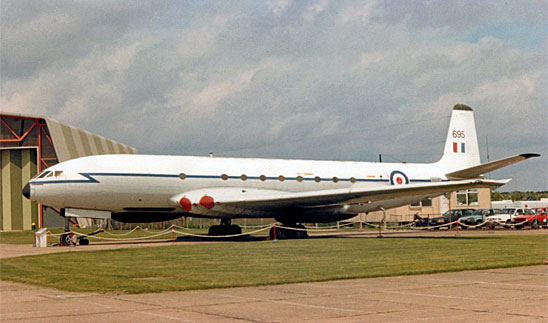
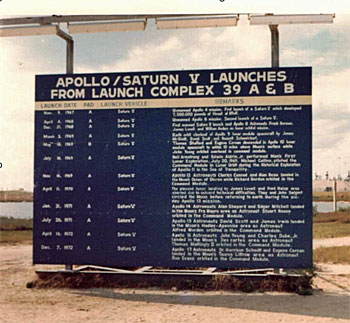
Comet C2R of 51 Squadron, RAF Wyton
Kennedy Space Launch Complex 39A & B
We then carried on up the coast road (secure and inside the complex) and paid a visit to the NASA Complex which is Cape Kennedy. To this day ALL civilian launches take place on Cape Kennedy and Military from Cape Canaveral. We drove out to Launch Pads 39A & B which were from where the Saturn V Moon Launches (Apollo) took place from. To this day I can remember Neil Armstrong stepping out on the moon in July 1969. I watched it on TV in a cafe in Malta, where I was on two weeks R&R from RAF El Adem in Libya.
Further down the deserted road we came across yet another unbelievable sight. There on the side of the road was a complete Saturn V rocket. The size of the thing was really impressive. For the ultimate Kodak moment both my pal and I took turns at standing in one of the venturi and taking a picture. All the time I was thinking to myself, “Just over five years ago astronauts flew in one of these to the moon”. Being on our best behaviour, we did not remove anything as a souvenir for the crew room! (Many years later whilst my family were young we spent many a holiday in Orlando and visited the Disney Complex. I/we have also visited the Kennedy Space Centre complex and now one of their major attractions inside is the very same Saturn V rocket we freely clambered over.)
Further down the deserted road we came across yet another unbelievable sight. There on the side of the road was a complete Saturn V rocket. The size of the thing was really impressive. For the ultimate Kodak moment both my pal and I took turns at standing in one of the venturi and taking a picture. All the time I was thinking to myself, “Just over five years ago astronauts flew in one of these to the moon”. Being on our best behaviour, we did not remove anything as a souvenir for the crew room! (Many years later whilst my family were young we spent many a holiday in Orlando and visited the Disney Complex. I/we have also visited the Kennedy Space Centre complex and now one of their major attractions inside is the very same Saturn V rocket we freely clambered over.)
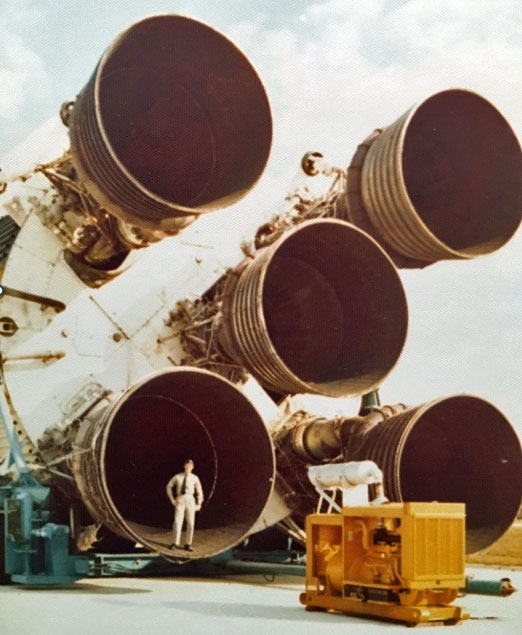
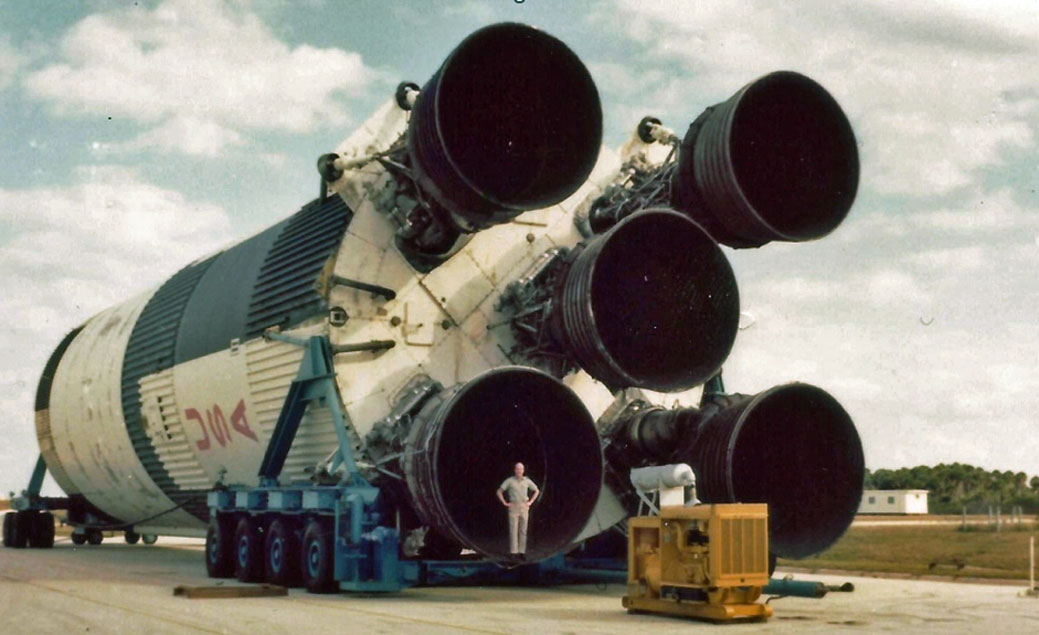
Myself stood in the Venturi
My fellow team member, Nigel, posing with the Saturn V
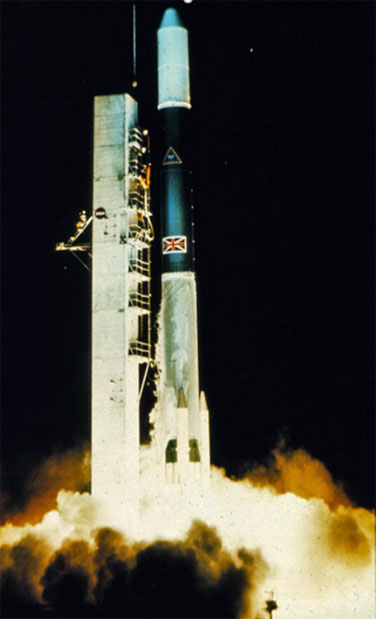
By mid afternoon all our chores were finished and we were making the most of our unforeseen free time.
I do recall standing on the beach outside the back of our Motel, cocktail in hand, waiting for and then watching the successful launch of Skynet 2B.
This took place on a beautiful clear evening north of our location and the launch was once again impressive. It also meant the fun was over and down to business the following day.
I do recall standing on the beach outside the back of our Motel, cocktail in hand, waiting for and then watching the successful launch of Skynet 2B.
This took place on a beautiful clear evening north of our location and the launch was once again impressive. It also meant the fun was over and down to business the following day.
All the equipment we were tasked to recover for Marconi was in the same building on Cape Canaveral. Parts of the test equipment included rather large electronic consoles but the preparation of the aircraft pallets was made much easier as the preparation room we were using contained an overhead gantry. One of the team was tasked with monitoring the weight of each item and compiling manifests.
On completion, we had built 10 aircraft pallets of equipment. A “trial trim” was also calculated and then the pallets marked in sequence of loading. They were finally loaded onto trailers which were rollered and in the morning, once at the airfield, they would be transferred on to a ubiquitous Condec 25k Aircraft Loader provided by the USAF and operated by ourselves.
On completion, we had built 10 aircraft pallets of equipment. A “trial trim” was also calculated and then the pallets marked in sequence of loading. They were finally loaded onto trailers which were rollered and in the morning, once at the airfield, they would be transferred on to a ubiquitous Condec 25k Aircraft Loader provided by the USAF and operated by ourselves.
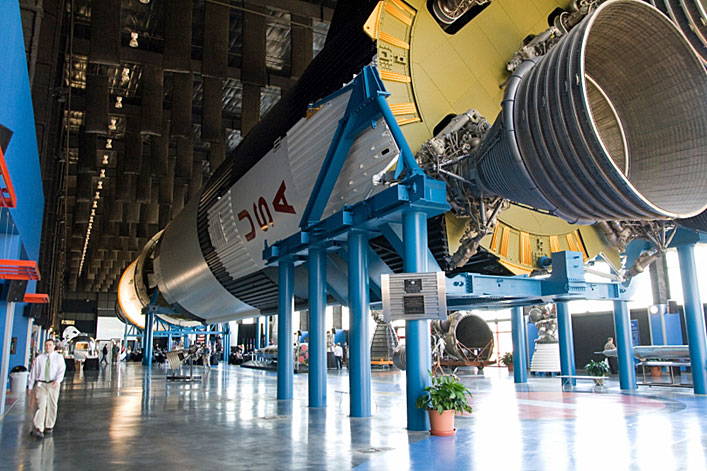
The same Saturn V rocket we climbed over is now displayed in the Space Complex
The airfield at Cape Canaveral Air Station is known as Skid Strip. It is in constant use even today and is where most military missiles/rockets are flown in to. This was NOT the runway used to receive the Space Shuttle however, which is located on Cape Kennedy. All was now ready for the arrival of the Belfast tasked to recover the load back to UK.
On the 25th we sadly vacated the motel and in gratitude to our excellent hosts presented them with a squadron plaque. Then on to Patrick AFB to return the rentals and then, on time, Belfast XR363 (Goliath) arrived. As there are limited facilities at Skid Strip, the aircraft was partially refuelled, took on in-flight catering and took care of some minor maintenance. The flight on to Skid Strip took 15 minutes! As we had already prepared the manifests and documentation in advance, the crew were aware of their ZFW (Zero Fuel Weight) and were able to calculate a fuel figure and requirement.
On the 25th we sadly vacated the motel and in gratitude to our excellent hosts presented them with a squadron plaque. Then on to Patrick AFB to return the rentals and then, on time, Belfast XR363 (Goliath) arrived. As there are limited facilities at Skid Strip, the aircraft was partially refuelled, took on in-flight catering and took care of some minor maintenance. The flight on to Skid Strip took 15 minutes! As we had already prepared the manifests and documentation in advance, the crew were aware of their ZFW (Zero Fuel Weight) and were able to calculate a fuel figure and requirement.
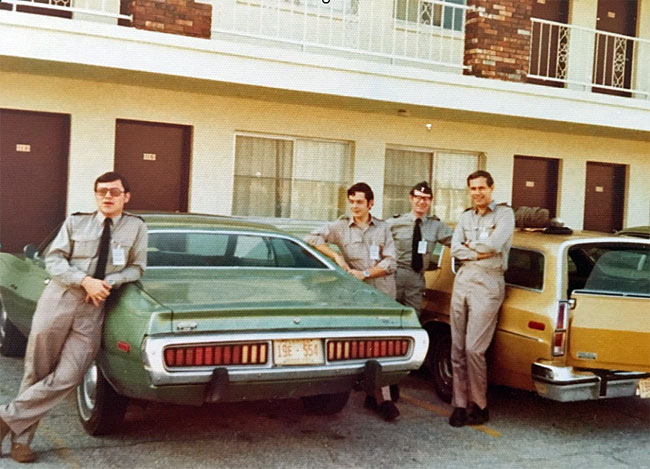
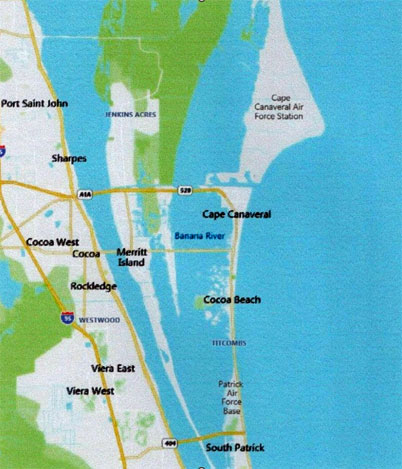
Cocoa Beach, Canaveral and Patrick
Vacating the Bates Motel (note the cars)
The physical loading of the aircraft was pretty straightforward and no real problems encountered. Without the use of a 25k Condec and the height of the aircraft sill, the loading of pallets would have been a nightmare. My log book shows that the loading was completed in 90 minutes as from landing to departing Skid Strip was only 2hrs 15mins. This obviously put us in the “good books” with the operating crew as those readers who flew for a living know how “tetchy” they get when delayed!
We then departed Canaveral and headed for Charleston AFB, some 1hr 10mins flying time away to take on board our full requirement of fuel. From there we headed on to Bermuda and night stopped. From there we flew on to Lajes NAS for a quick fuel stop (and duty free collection from the Class 6 Store – Class 6 = Liquor!). Finally, just over five hours later we arrived at RAF Thorney Island. The Station Air Movements Flight provided us with assistance and handling equipment; to work on such a large aircraft as the Belfast was a novelty for them. Eventually we arrived back at Brize Norton before a coach trip back to Lyneham for my team.
Even now, some 46 years after this task, the memories are still strong. So many unbelievable events occurred and sights I never thought I would see. “Join the Navy and see the world?” They got it wrong!
Best Regards,
Ian
We then departed Canaveral and headed for Charleston AFB, some 1hr 10mins flying time away to take on board our full requirement of fuel. From there we headed on to Bermuda and night stopped. From there we flew on to Lajes NAS for a quick fuel stop (and duty free collection from the Class 6 Store – Class 6 = Liquor!). Finally, just over five hours later we arrived at RAF Thorney Island. The Station Air Movements Flight provided us with assistance and handling equipment; to work on such a large aircraft as the Belfast was a novelty for them. Eventually we arrived back at Brize Norton before a coach trip back to Lyneham for my team.
Even now, some 46 years after this task, the memories are still strong. So many unbelievable events occurred and sights I never thought I would see. “Join the Navy and see the world?” They got it wrong!
Best Regards,
Ian

(Preface: John Scott is a former RCAF C130 captain and an honorary member of the OBA)

From: John Scott, Waterloo, ON
Subject: The James Bay Hydro Project
Subject: The James Bay Hydro Project
The James Bay Hydro Project
It was May 1977. The famous James Bay Hydro Project in Quebec was well underway. The aircraft being used was a QuebecAir 130E CF DSX. However, it was I believe as having to undergo a “D” and thus it was taken out of operation. Why a C130? Location, location, location!
La Grande is located on the east coast of James Bay. This was a very strategic location as all supplies necessary in the construction of the monstrous Dam. Three remote gravel 3500’ x 50’ airstrips had been created LG 1, LG 2 and LG 3. (LG = La Grande). The C-130 was of course, the best possible aircraft to airlift the many different lengths and circumferences of the lead pipes that had been brought into La Grande by ship.
So, the situation was very problematic for the Director of Operations (a retired Colonel who I believe was Royal 22ieme Regiment and very well connected). He, allegedly approached the Premier with the idea that the Canadian Forces could be approved to use resources in ‘Aid to Civil Power’. Normally that would be considered to be to combat an insurrection – not a resurrection! (I digress). And so, 436 Squadron, CFB Trenton was to dispatch a C-130 and crew plus necessary maintenance to La Grande for two weeks (rotating one crew every 7 days to fly as much as 6 chalks per day. I was so assigned.
La Grande is located on the east coast of James Bay. This was a very strategic location as all supplies necessary in the construction of the monstrous Dam. Three remote gravel 3500’ x 50’ airstrips had been created LG 1, LG 2 and LG 3. (LG = La Grande). The C-130 was of course, the best possible aircraft to airlift the many different lengths and circumferences of the lead pipes that had been brought into La Grande by ship.
So, the situation was very problematic for the Director of Operations (a retired Colonel who I believe was Royal 22ieme Regiment and very well connected). He, allegedly approached the Premier with the idea that the Canadian Forces could be approved to use resources in ‘Aid to Civil Power’. Normally that would be considered to be to combat an insurrection – not a resurrection! (I digress). And so, 436 Squadron, CFB Trenton was to dispatch a C-130 and crew plus necessary maintenance to La Grande for two weeks (rotating one crew every 7 days to fly as much as 6 chalks per day. I was so assigned.
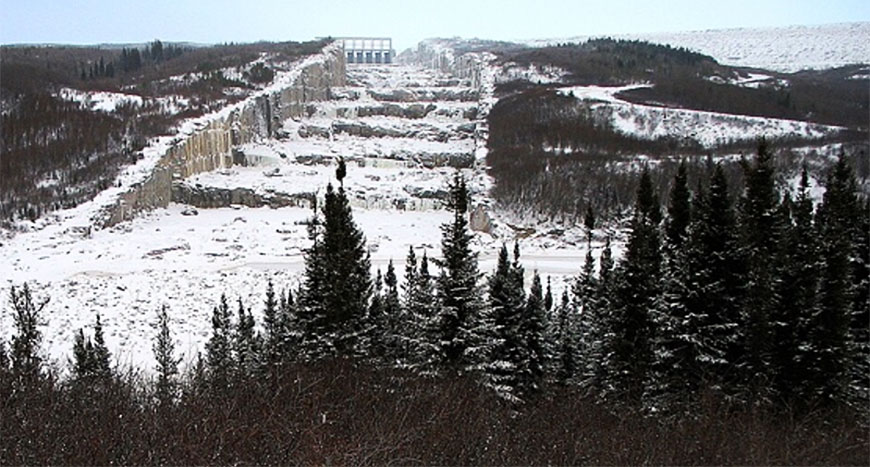
UPDATE - June 28th - South East counter terrorism police have now arrested a 29-year-old woman of no fixed abode and two men, aged 36 and 24, both from London, on terror charges. The arrests took place in Newbury, Berkshire.
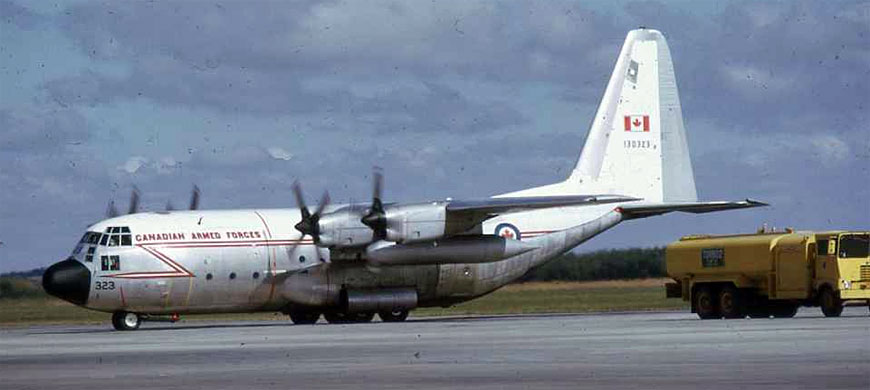
There are two very important parts of the operation. 1st: La Grande has a great 5,600’ x 100’ standard runway with approach aids. 2nd: Lac Pau was the destination airfield. One NDB on the field. 3500’ x 50’ gravel with 10 ft deep ditches on either side. There was a suitable ‘turn around pad area at the runway end. The ramp was again gravel and it had a 1 foot ‘dug out’ trough that the Herc had to taxi into so that off-loading the cargo could be accomplished onto the L23 loader on a ‘level’ platform. No mule available for ground manoeuvre so engines 2 & 3 were started and gently used to back out of the hole. Remember pilot, do NOT put your feet on the brakes!
But now, the rest of the story. It was the first run of the day. Bright and shiny, light winds, unlimited visibility. We arrived at operations to find out what the load might be today. It was 8” pipe sections. Weight and balance, fuel load all ok and the load was all secured. Now just the flight plan and the crew, two pilots, nav, FE and one loadie. Aircraft was all pre-flighted. Checks complete. Ramp closed. Engine start up and cleared to taxi.
Cleared for takeoff. Power set, rolling. 80 kts (seems slow) crossing 125 kts runway red end lights. No more balanced field!! V1 rotate. Main gear come off as we crossed the runway end lights! Gear up. Slow increase in speed as we slowly climb over the water. Eventually get to flap retraction and we make a easy turn eastwards towards Lac Pau. Much chatting amongst crew. No answer. Our flight planned altitude was FL280. We got to FL220 but our climb rate was now at 100 fpm = Max ceiling. Stabilized. Set power and determine airspeed.
Nav and FE get out the manuals. Checking the charts comparing altitude, airspeed to determine what our probable weight was as everything else was performing properly.
“Hey Loady, bring up the information on the load, please” says I.
“Here it is skipper. It says 12x 8” pipe sections” says he.
Loady and FE go back and have a look at the load. FE takes out a measuring tape. FE returns to the flight deck. “Well, skipper, we have 12 x 12” pipes. I figure we are about 8,000# heavier than the W & B!”
At least now we know the why. Once again the technical information in the charts proved the incredible accuracy related to this aircraft. Now that we knew what weight we were at we could adjust our approach and landing speeds accordingly. Whew! We did manage to use all the runway at Lac Pau even though we were overweight. Just another day as a professional Herc Crew. The operations load team was fired. This came pretty close to a potential tragic event.
Best regards,
John
But now, the rest of the story. It was the first run of the day. Bright and shiny, light winds, unlimited visibility. We arrived at operations to find out what the load might be today. It was 8” pipe sections. Weight and balance, fuel load all ok and the load was all secured. Now just the flight plan and the crew, two pilots, nav, FE and one loadie. Aircraft was all pre-flighted. Checks complete. Ramp closed. Engine start up and cleared to taxi.
Cleared for takeoff. Power set, rolling. 80 kts (seems slow) crossing 125 kts runway red end lights. No more balanced field!! V1 rotate. Main gear come off as we crossed the runway end lights! Gear up. Slow increase in speed as we slowly climb over the water. Eventually get to flap retraction and we make a easy turn eastwards towards Lac Pau. Much chatting amongst crew. No answer. Our flight planned altitude was FL280. We got to FL220 but our climb rate was now at 100 fpm = Max ceiling. Stabilized. Set power and determine airspeed.
Nav and FE get out the manuals. Checking the charts comparing altitude, airspeed to determine what our probable weight was as everything else was performing properly.
“Hey Loady, bring up the information on the load, please” says I.
“Here it is skipper. It says 12x 8” pipe sections” says he.
Loady and FE go back and have a look at the load. FE takes out a measuring tape. FE returns to the flight deck. “Well, skipper, we have 12 x 12” pipes. I figure we are about 8,000# heavier than the W & B!”
At least now we know the why. Once again the technical information in the charts proved the incredible accuracy related to this aircraft. Now that we knew what weight we were at we could adjust our approach and landing speeds accordingly. Whew! We did manage to use all the runway at Lac Pau even though we were overweight. Just another day as a professional Herc Crew. The operations load team was fired. This came pretty close to a potential tragic event.
Best regards,
John


From: Colin Eyre, Bridgend, Glamorgan
Subject: The Most Unique or Memorable Place
Hi Tony,
I found it hard to pick out just one from so many which includes these:
December 1967 - Anderson AFB on Guam. I was on my first UKMAMS task. We had an overnight stay here. The Vietnam war was ongoing and this was a USAF base that was being used in support of that. Whilst being driven from our aircraft to our accommodation we passed along the flight line and revetments and here is where we lost count of the B52's that were parked wing-tip to wing-tip, each with an armed guard. It was some sight but I did however read later that in 1972 there were 150 of these aircraft operating from there.
April 1970 - Changi. Exercise Bersatu Padu. Although we were there for 10 days we didn’t have a lot of time for sightseeing but did however manage an evening trip downtown to Bugis Street. I remember we had some refreshments as we sat and watched the parade go by. I believe Singapore has changed dramatically since then.
Feb 1971 - Embakasi. We had a couple of days off before our first flight was due and so four of us decided we would use our hire car to drive the 300 miles form Nairobi to Mombasa. It was not the best of roads but driving through Tsavo game park was a real lifetime experience. We were going pretty fast when a warthog ran across the road in front of us. To cap that, we then saw elephants mating in the bush. Not an everyday occurrence!
I can spin some stories out of these for my grandchildren and great grandchildren; somewhat embellished of course.
Colin
Subject: The Most Unique or Memorable Place
Hi Tony,
I found it hard to pick out just one from so many which includes these:
December 1967 - Anderson AFB on Guam. I was on my first UKMAMS task. We had an overnight stay here. The Vietnam war was ongoing and this was a USAF base that was being used in support of that. Whilst being driven from our aircraft to our accommodation we passed along the flight line and revetments and here is where we lost count of the B52's that were parked wing-tip to wing-tip, each with an armed guard. It was some sight but I did however read later that in 1972 there were 150 of these aircraft operating from there.
April 1970 - Changi. Exercise Bersatu Padu. Although we were there for 10 days we didn’t have a lot of time for sightseeing but did however manage an evening trip downtown to Bugis Street. I remember we had some refreshments as we sat and watched the parade go by. I believe Singapore has changed dramatically since then.
Feb 1971 - Embakasi. We had a couple of days off before our first flight was due and so four of us decided we would use our hire car to drive the 300 miles form Nairobi to Mombasa. It was not the best of roads but driving through Tsavo game park was a real lifetime experience. We were going pretty fast when a warthog ran across the road in front of us. To cap that, we then saw elephants mating in the bush. Not an everyday occurrence!
I can spin some stories out of these for my grandchildren and great grandchildren; somewhat embellished of course.
Colin


From: Paul “Taff” Kelly, Lyneham, Wilts
Subject: The Most Unique or Memorable Place
Hi Tony,
'Unique' place - Brunei Docks. In 1980, while on tour in HKG (RAFau), I was sent to Bandar Seri Begawan airport, to handle a VC10 roulement. On arrival, I was met by RCT MovCon, to assist in off-load and on-load. Subsequently, I was to remain in-situ to handle the returning aircraft the following day.
The army movers were handling sea movements at Brunei Docks, so I tagged along. On arrival, they asked if I could assist loading the RFL as I had an 'Eager Beaver' forklift licence, no probs. On completion of on-load we had some 'scram' and a few Tiger beers.
Rule number one, always take an overnight bag down route, just in case. Next morning I returned to the airport, turned the aircraft around, and headed back to HKG. I never loaded another ship thereafter.
Rgds Taff Kelly
Subject: The Most Unique or Memorable Place
Hi Tony,
'Unique' place - Brunei Docks. In 1980, while on tour in HKG (RAFau), I was sent to Bandar Seri Begawan airport, to handle a VC10 roulement. On arrival, I was met by RCT MovCon, to assist in off-load and on-load. Subsequently, I was to remain in-situ to handle the returning aircraft the following day.
The army movers were handling sea movements at Brunei Docks, so I tagged along. On arrival, they asked if I could assist loading the RFL as I had an 'Eager Beaver' forklift licence, no probs. On completion of on-load we had some 'scram' and a few Tiger beers.
Rule number one, always take an overnight bag down route, just in case. Next morning I returned to the airport, turned the aircraft around, and headed back to HKG. I never loaded another ship thereafter.
Rgds Taff Kelly
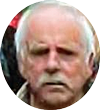

From: Paul Thornton, Blyth, Northumberland
Subject: The Most Unique or Memorable Place
Hi Tony,
Having not really completed a MAMS tour, my visits to far-off places was limited. However, I did spend 2 nights at Buckley Space Force Base, near Aurora, which is on the outskirts of Denver. The RAF had never been there before, or at least not for a long time. So, I decided to go and perform my RAFLO duties. I stayed in a very nice hotel, which according to the reception staff, had been used by various US President throughout its history. Nothing much out of the ordinary happened, it was a normal night stop.
On a different subject, the crew had been in touch and declared that they would self cater. Now as the RAFLO, I had seen lots of catering bills, covering many thousands of dollars for a Tristar flight from Las Vegas and Seattle. I think the most outrageous was for the flights from New Mexico, which were crew only, and the order worked out at about $100 a person. I later found out that New Mexico Special Steak was in fact Lobster. Back to Buckley, I drove the ALM and the steward to a supermarket and they spent around $300 for a crew of 12 for a 9 hour flight back to Brize. Amazing difference!
The coldest job I did was at Hill AFB in Utah. A Monarch B757 and a Tristar arrived on the same day and I had already enquired about the overnight temperature. It was going to be -40°C, which just happens to be -40°F. The Monarch crew got off the plane and went to the hotel. The Tristar crew had a 10 minute group chat and decided to keep one of the GE's and 2 SVC on board with the APU running all night. The Tornado detachment kindly lent them a vehicle to use during the night. What a difference.
Keep safe and all the best
Paul Thornton
Subject: The Most Unique or Memorable Place
Hi Tony,
Having not really completed a MAMS tour, my visits to far-off places was limited. However, I did spend 2 nights at Buckley Space Force Base, near Aurora, which is on the outskirts of Denver. The RAF had never been there before, or at least not for a long time. So, I decided to go and perform my RAFLO duties. I stayed in a very nice hotel, which according to the reception staff, had been used by various US President throughout its history. Nothing much out of the ordinary happened, it was a normal night stop.
On a different subject, the crew had been in touch and declared that they would self cater. Now as the RAFLO, I had seen lots of catering bills, covering many thousands of dollars for a Tristar flight from Las Vegas and Seattle. I think the most outrageous was for the flights from New Mexico, which were crew only, and the order worked out at about $100 a person. I later found out that New Mexico Special Steak was in fact Lobster. Back to Buckley, I drove the ALM and the steward to a supermarket and they spent around $300 for a crew of 12 for a 9 hour flight back to Brize. Amazing difference!
The coldest job I did was at Hill AFB in Utah. A Monarch B757 and a Tristar arrived on the same day and I had already enquired about the overnight temperature. It was going to be -40°C, which just happens to be -40°F. The Monarch crew got off the plane and went to the hotel. The Tristar crew had a 10 minute group chat and decided to keep one of the GE's and 2 SVC on board with the APU running all night. The Tornado detachment kindly lent them a vehicle to use during the night. What a difference.
Keep safe and all the best
Paul Thornton
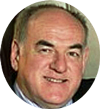
From: Andrew Spinks, Warkleigh, Devon
Subject: The Most Unique or Memorable Place
Hi Tony,
Without any doubt, the most memorable (and in many senses unique) place during my Air Force career was Kathmandu in Nepal. I don’t imagine I will be alone in naming this place as something special, especially as I was there in the late 70's before tourism became popular and the consequent pollution partially obscured the spectacular views.
Subject: The Most Unique or Memorable Place
Hi Tony,
Without any doubt, the most memorable (and in many senses unique) place during my Air Force career was Kathmandu in Nepal. I don’t imagine I will be alone in naming this place as something special, especially as I was there in the late 70's before tourism became popular and the consequent pollution partially obscured the spectacular views.
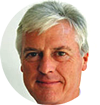
Kathmandu (KTM) was the airport from where Gurkha soldiers were flown, to Hong Kong initially, after their recruitment from the hill villages throughout Nepal. The ‘Gurkha Trooping’, as it was called, was operated by a Britannia in the early 70's before becoming a VC10 task. The VC10 was based at RAF Kai Tak in Hong Kong for two periods of 4 months (the other 4 months being the Monsoon season, which was unsuitable for recruiting and not good for flying). A UKMAMS officer and a SNCO - the late great Mick Day was detached with me - were based in Kathmandu for the season to manage the airlift. The VC10 arrived late afternoon and night-stopped. Inbound from HKG were usually Gurkhas returning with their families and personal effects at the end of their service or for leave.
The onload next morning comprised new recruits and those returning after leave. The VC10 crew was accommodated with us in a large detached house on the edge of Kathmandu (appropriately called Britannia House). Because the same VC10 crews flew the tasks, we got to know them very well and it was a very close working relationship. So it was a highly professional and enjoyable 4 months. The VC10 was seldom late arriving and invariably departed on time after its night stop. I remember sending the TRANSDEP signal when the last of the 52 seasonal flights left, reminding them that all 52 flights had departed precisely on time at 1010 local (the nightly fog clearing almost to the minute at 0930). The VC10 always took off toward the Himalayas, providing a magnificent spectacle to the dozens of people who gathered to watch this noisy departure and the steep climb out towards the mountains.
The onload next morning comprised new recruits and those returning after leave. The VC10 crew was accommodated with us in a large detached house on the edge of Kathmandu (appropriately called Britannia House). Because the same VC10 crews flew the tasks, we got to know them very well and it was a very close working relationship. So it was a highly professional and enjoyable 4 months. The VC10 was seldom late arriving and invariably departed on time after its night stop. I remember sending the TRANSDEP signal when the last of the 52 seasonal flights left, reminding them that all 52 flights had departed precisely on time at 1010 local (the nightly fog clearing almost to the minute at 0930). The VC10 always took off toward the Himalayas, providing a magnificent spectacle to the dozens of people who gathered to watch this noisy departure and the steep climb out towards the mountains.
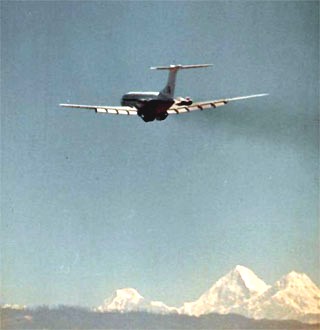
VC-10 Departing KTM for HKG
But it was people who made it special, not just the invariably cooperative crews but also the local staff who looked after us. In the photo at left are The Britannia House staff and our driver on the day Mick Day and I departed at the end of the season
It was a memorable 4 months in a special location, and a much sought-after detachment. With only 2 seasons a year, there were only two Team Leaders who were lucky enough to be selected, with their chosen SNCO, for this detachment each year. So you might imagine my surprise when, while deployed to the rather less pleasant mosquito-ridden Belize, I was recalled to UK to re-deploy to Kathmandu for a second stint.
I thought this was a wind-up and told MAMS HQ so, but it was followed by a rather sterner order for me to get on the next aircraft back to UK. The reason for sending me back to Nepal? The UK Government had agreed that Royal Nepal Airlines could take over the Gurkha Trooping task, and this all happened at very short notice. So it was deemed necessary for someone who had been the KTM Det Cdr previously to re-deploy to ‘bed in’ Royal Nepal Airlines.
It was a memorable 4 months in a special location, and a much sought-after detachment. With only 2 seasons a year, there were only two Team Leaders who were lucky enough to be selected, with their chosen SNCO, for this detachment each year. So you might imagine my surprise when, while deployed to the rather less pleasant mosquito-ridden Belize, I was recalled to UK to re-deploy to Kathmandu for a second stint.
I thought this was a wind-up and told MAMS HQ so, but it was followed by a rather sterner order for me to get on the next aircraft back to UK. The reason for sending me back to Nepal? The UK Government had agreed that Royal Nepal Airlines could take over the Gurkha Trooping task, and this all happened at very short notice. So it was deemed necessary for someone who had been the KTM Det Cdr previously to re-deploy to ‘bed in’ Royal Nepal Airlines.
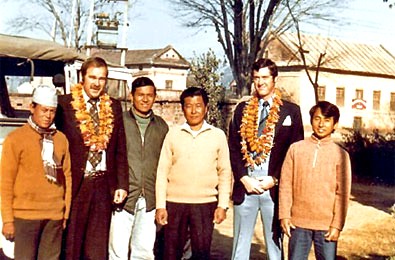
Off went Sgt Eddie Gordon and myself by BA to Hong Kong for a briefing before an enjoyable flight with Cathay to Bangkok and Royal Nepal Airlines from Bangkok to Kathmandu. Once again, after arriving in KTM, we had to construct the Britannia Freight-Lift Platform (Condec’s predecessor and a something of a temperamental beast) and prepare for 52 departures of what was now a PCF Boeing 727. I would be lying if I said it all went smoothly on this second detachment. Royal Nepal Airlines had acquired an already-aged 727 and there was no replacement aircraft if it went unserviceable. And the schedule was very different - it departed KTM in the evening and flew overnight to HKG.
On one memorable occasion, having returned to Britannia House after seeing off the charter, we heard the 727 circling over KTM around midnight. Sensing it must have been the Gurkha Trooping aircraft, we returned to the Airport to discover from ATC that the 727 had an undercarriage problem and was returning to land with the nose wheel retracted. The runway was foamed and we witnessed it landing in a shower of sparks. Thankfully it got no worse and the passengers and crew evacuated safely onto the runway. There is much more I could write about this event and its aftermath but that’s a story for another day.
On one memorable occasion, having returned to Britannia House after seeing off the charter, we heard the 727 circling over KTM around midnight. Sensing it must have been the Gurkha Trooping aircraft, we returned to the Airport to discover from ATC that the 727 had an undercarriage problem and was returning to land with the nose wheel retracted. The runway was foamed and we witnessed it landing in a shower of sparks. Thankfully it got no worse and the passengers and crew evacuated safely onto the runway. There is much more I could write about this event and its aftermath but that’s a story for another day.
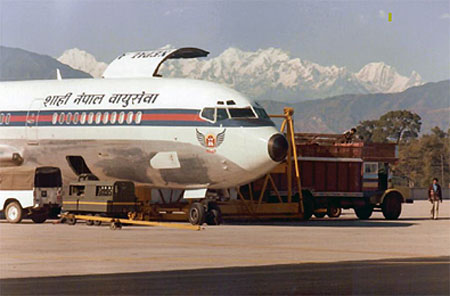
Royal Nepal Airlines B727 arriving in KTM from HKG
This event aside, it was another uplifting 4 months in what is my personal Shangri-La. I am sure it is very different there now, with masses of tourists (there were very few there in our day), reported heavy pollution and chaotic traffic jams. I would dearly like to return but I don’t want my memories of this wonderful place to be spoiled.
Thanks again for all you do to keep us in touch Tony, it’s very much appreciated.
All the best,
Andy
Thanks again for all you do to keep us in touch Tony, it’s very much appreciated.
All the best,
Andy

From: Neville Whitham, Preston, Lancs
Subject: The Passing of Bernard "Ben" Johnson.
Dear Tony,
It is with great sadness that I received the news this morning of my uncle's passing, from his son Alan. He died after a series of illnesses in Springhill Nursing Home, Accrington, after a short time there, having spent a few weeks in the Royal Blackburn Hospital. He was 89 years old.
Bernard "Ben" Johnson spent 22 years "in the mob" and like others, first served as a supplier, later moving across to Movements.
Subject: The Passing of Bernard "Ben" Johnson.
Dear Tony,
It is with great sadness that I received the news this morning of my uncle's passing, from his son Alan. He died after a series of illnesses in Springhill Nursing Home, Accrington, after a short time there, having spent a few weeks in the Royal Blackburn Hospital. He was 89 years old.
Bernard "Ben" Johnson spent 22 years "in the mob" and like others, first served as a supplier, later moving across to Movements.

He carried out his National Service in around 1954 -56, stepped outside into Civvi Street for a matter of months, before deciding to sign up on a more permanent basis for the RAF. I seem to recall that he completed his 22 years service back in 1977, when we both served at RAF Lyneham. Some of his tours were carried out in Abingdon, Muharraq, Kenya, Gutersloh, Lyneham, although I did know that he spent a considerable time on UKMAMS.
Some of his claims to fame were; he was part of a team that brought back Tutankhamen's treasures from Cairo for exhibition in the UK. He was also the first instructor on Condec Training.
From my recollection of events, Bernard got a job as a brewery rep with Matthew Brown (Lions) in Blackburn, after leaving the RAF, through a good friend of his in Civvi Steet. The late nights and ale must have got to him as he requested a job in the brewery stores, reverting to a transferable skill from his previous days. After working there for approx 15 years, the brewery got bought out and closed down, whereupon Bernard retired, aged 55 years.
Bernard's final journey will take place at 11:40 on Thursday 10th July at:
Accrington Crematorium,
Burnley Road,
Accrington, Lancashire BB5 6HA
Tel: 01254 232 933
Some of his claims to fame were; he was part of a team that brought back Tutankhamen's treasures from Cairo for exhibition in the UK. He was also the first instructor on Condec Training.
From my recollection of events, Bernard got a job as a brewery rep with Matthew Brown (Lions) in Blackburn, after leaving the RAF, through a good friend of his in Civvi Steet. The late nights and ale must have got to him as he requested a job in the brewery stores, reverting to a transferable skill from his previous days. After working there for approx 15 years, the brewery got bought out and closed down, whereupon Bernard retired, aged 55 years.
Bernard's final journey will take place at 11:40 on Thursday 10th July at:
Accrington Crematorium,
Burnley Road,
Accrington, Lancashire BB5 6HA
Tel: 01254 232 933
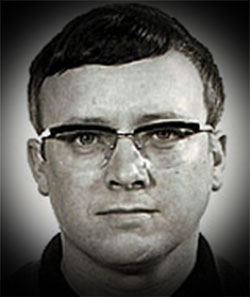
Bernard "Ben" Johnson,
Feb 1936 - 22 Jun 2025
Feb 1936 - 22 Jun 2025
Bernard settled in Clitheroe for his latter years and it is likely that a wake will be held there, so that his elderly neighbours and friends can attend with ease - details yet to be confirmed. Alan mentioned a name from the past, Eddie Lockyer, who was a friend in the RAF from earlier years, who Bernard never managed to reconnect with. Bernard didn't have any internet so he was largely excluded from the relative ease of communication.
Nev Whitham (to send Nev an e-mail, click on the flags next to his name above)
Nev Whitham (to send Nev an e-mail, click on the flags next to his name above)
This Newsletter is Dedicated
to the Memories of:
Brian Basting (RAF)
Bernard "Ben" Johnson (RAF)
Dennis "Pinky" Searle (RNZAF)
to the Memories of:
Brian Basting (RAF)
Bernard "Ben" Johnson (RAF)
Dennis "Pinky" Searle (RNZAF)
Tony Gale
ukmamsoba@gmail.com
ukmamsoba@gmail.com
